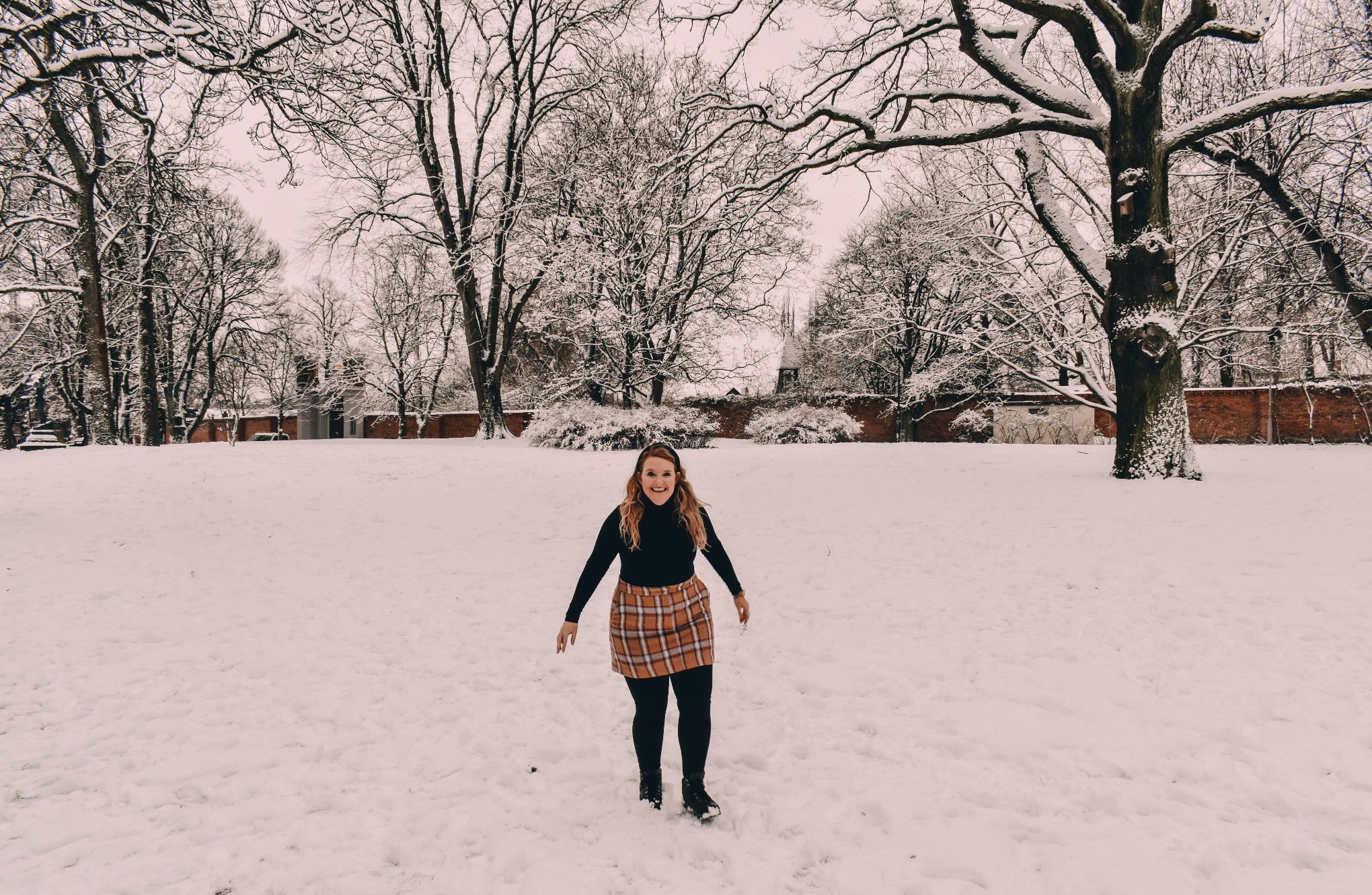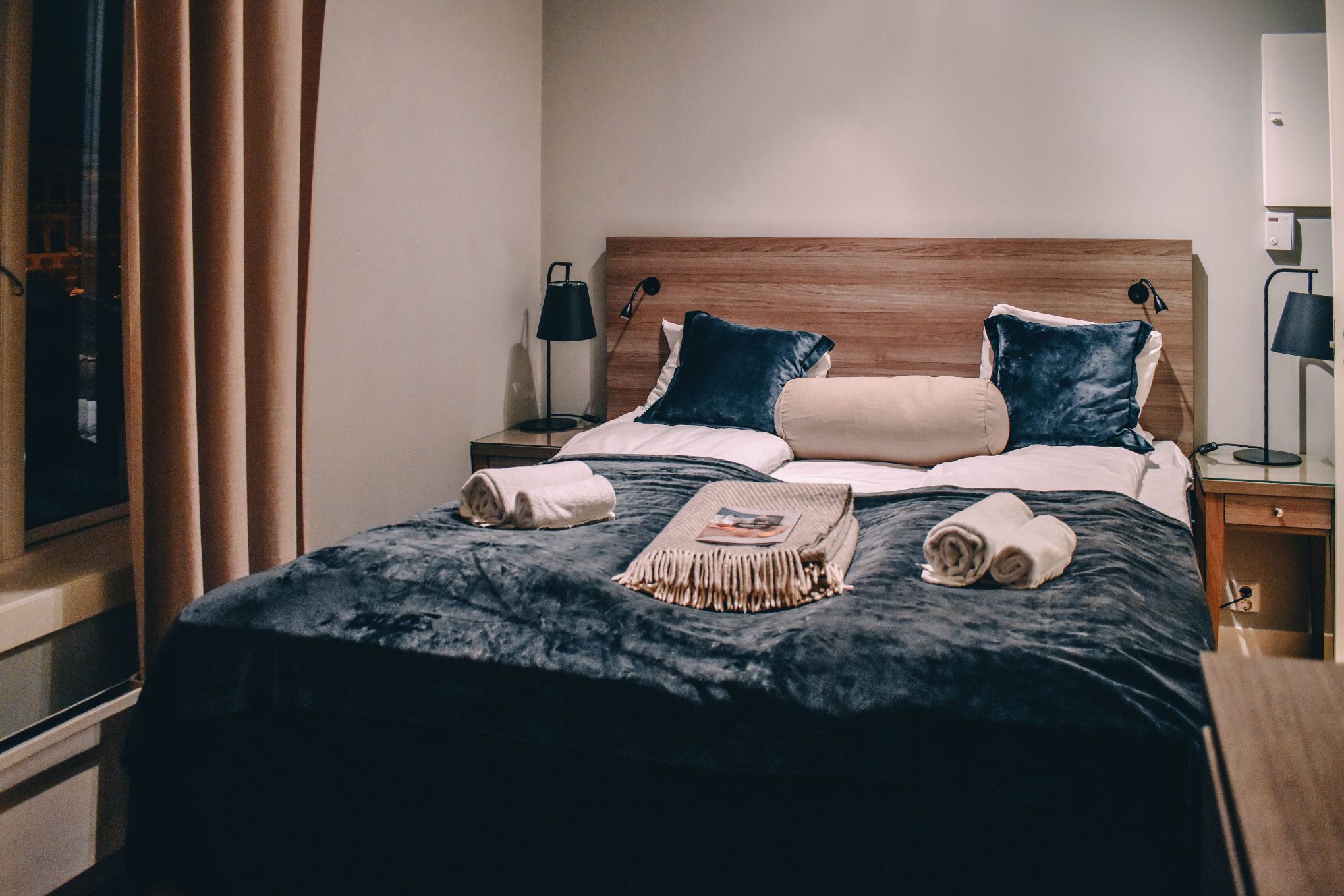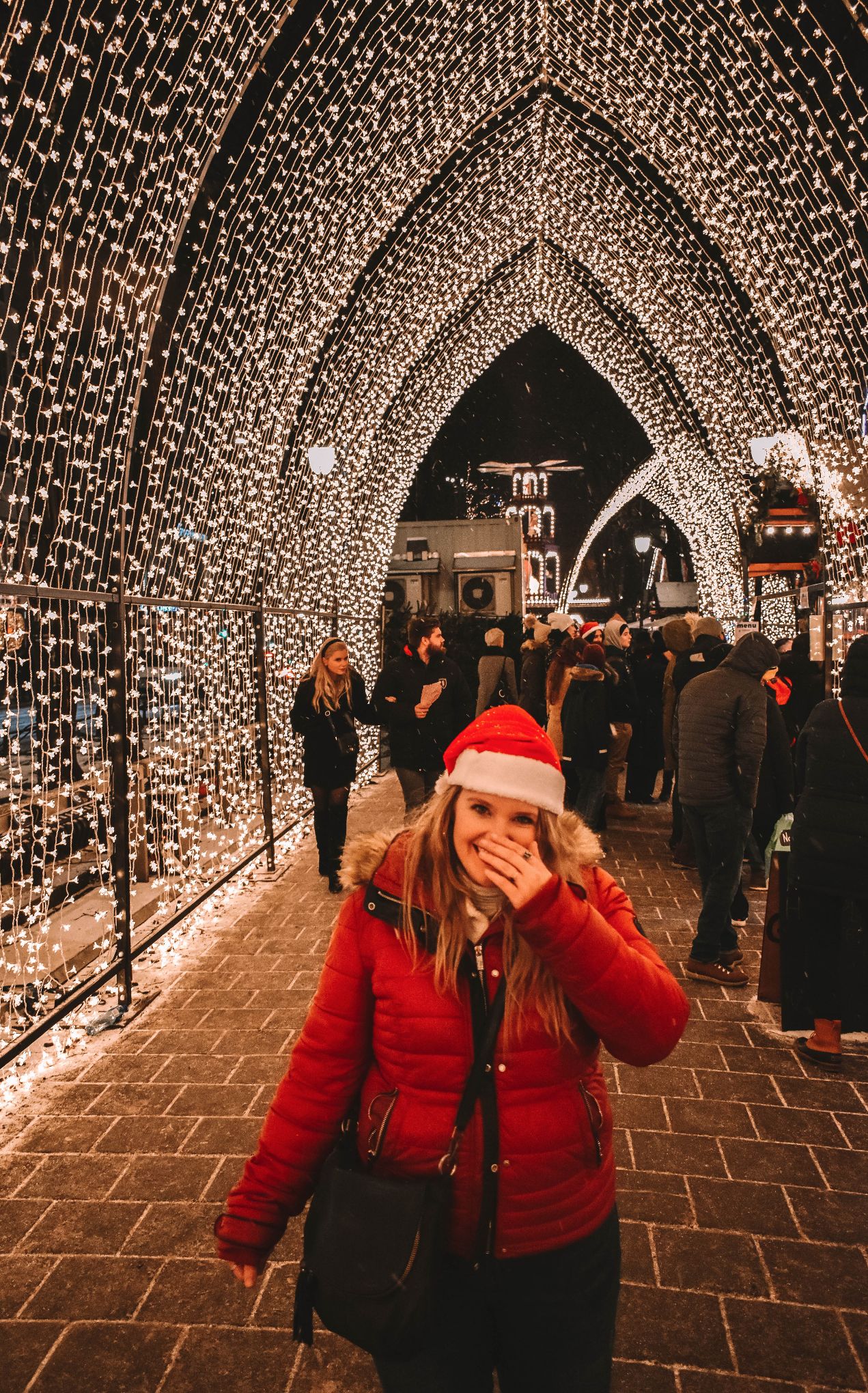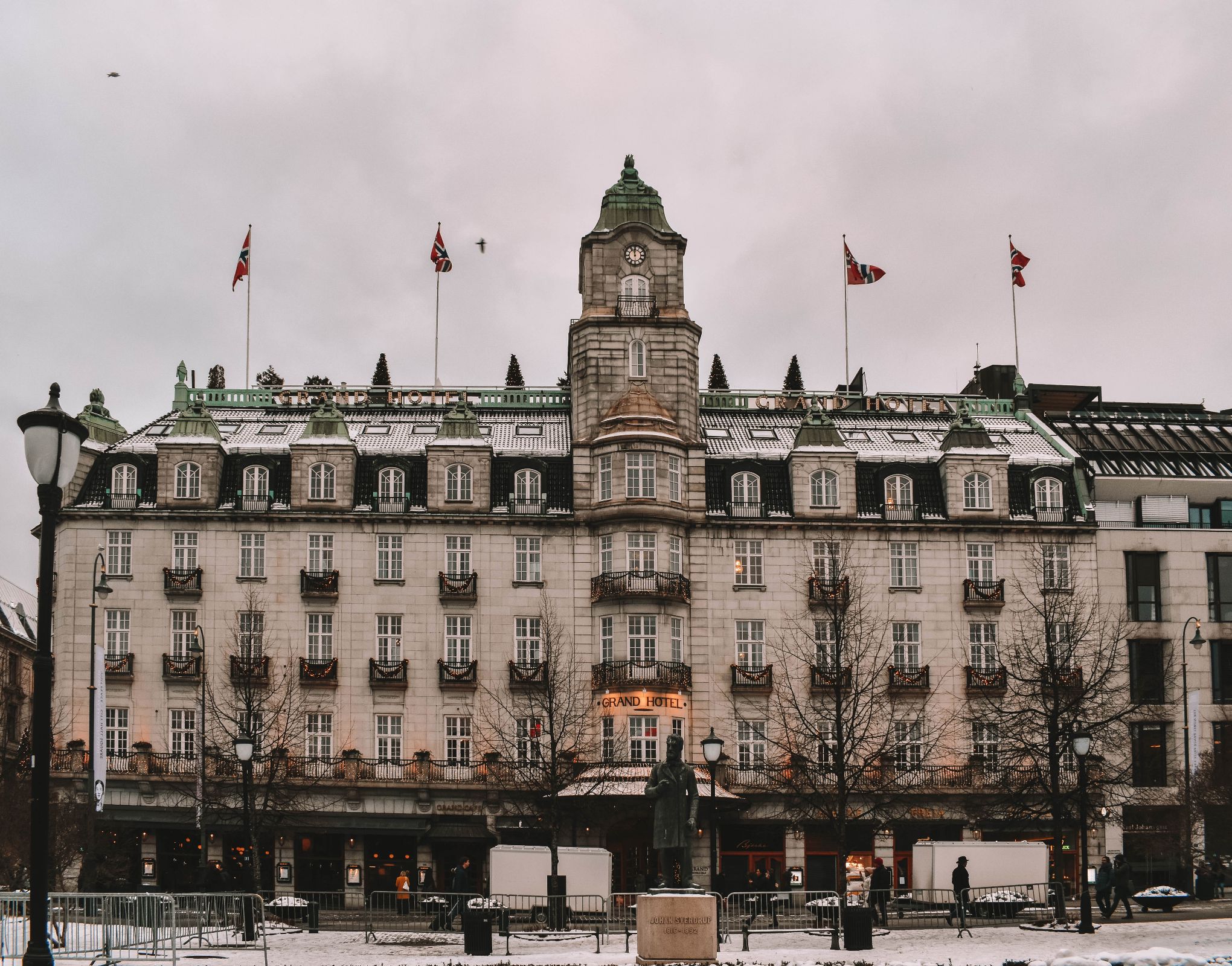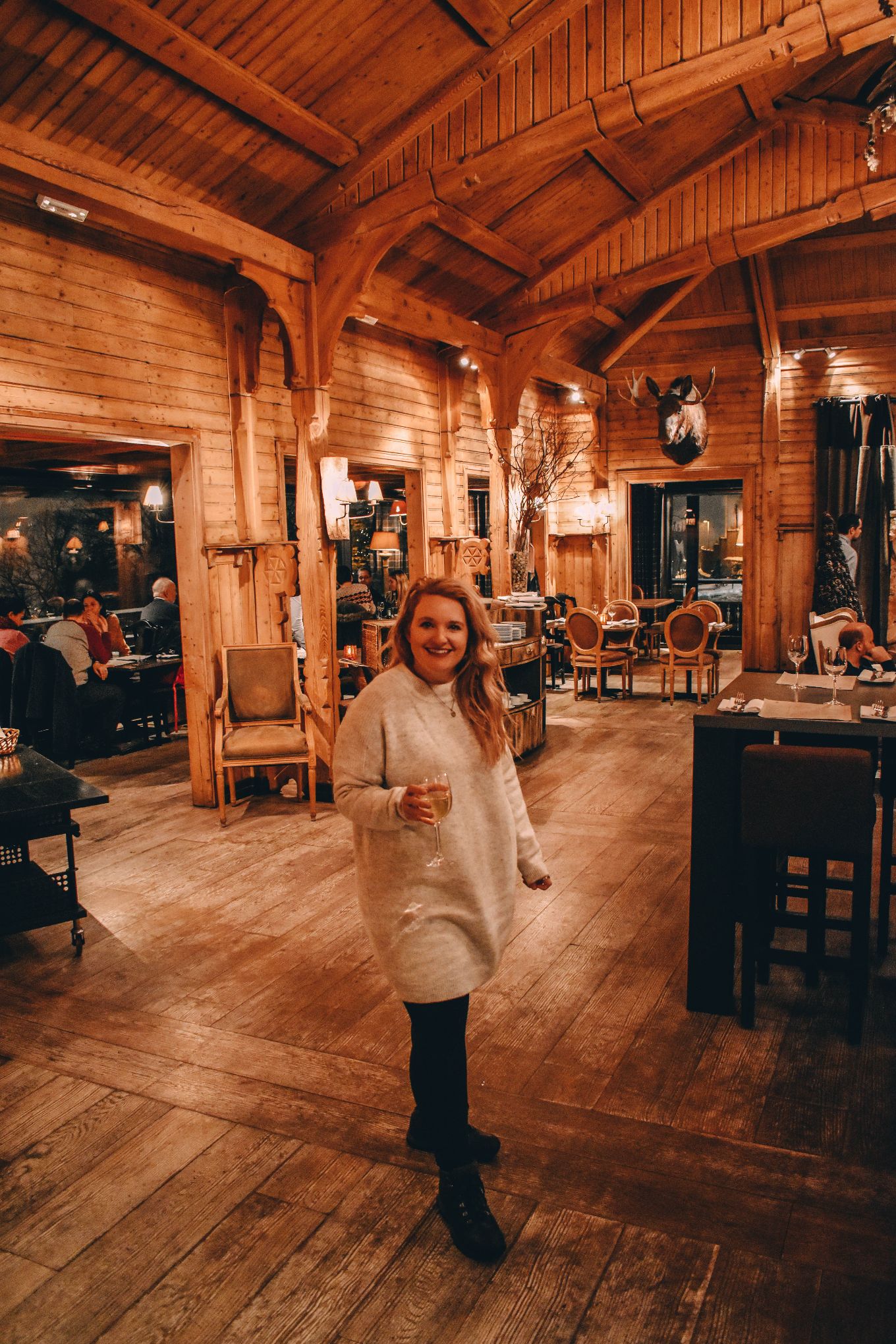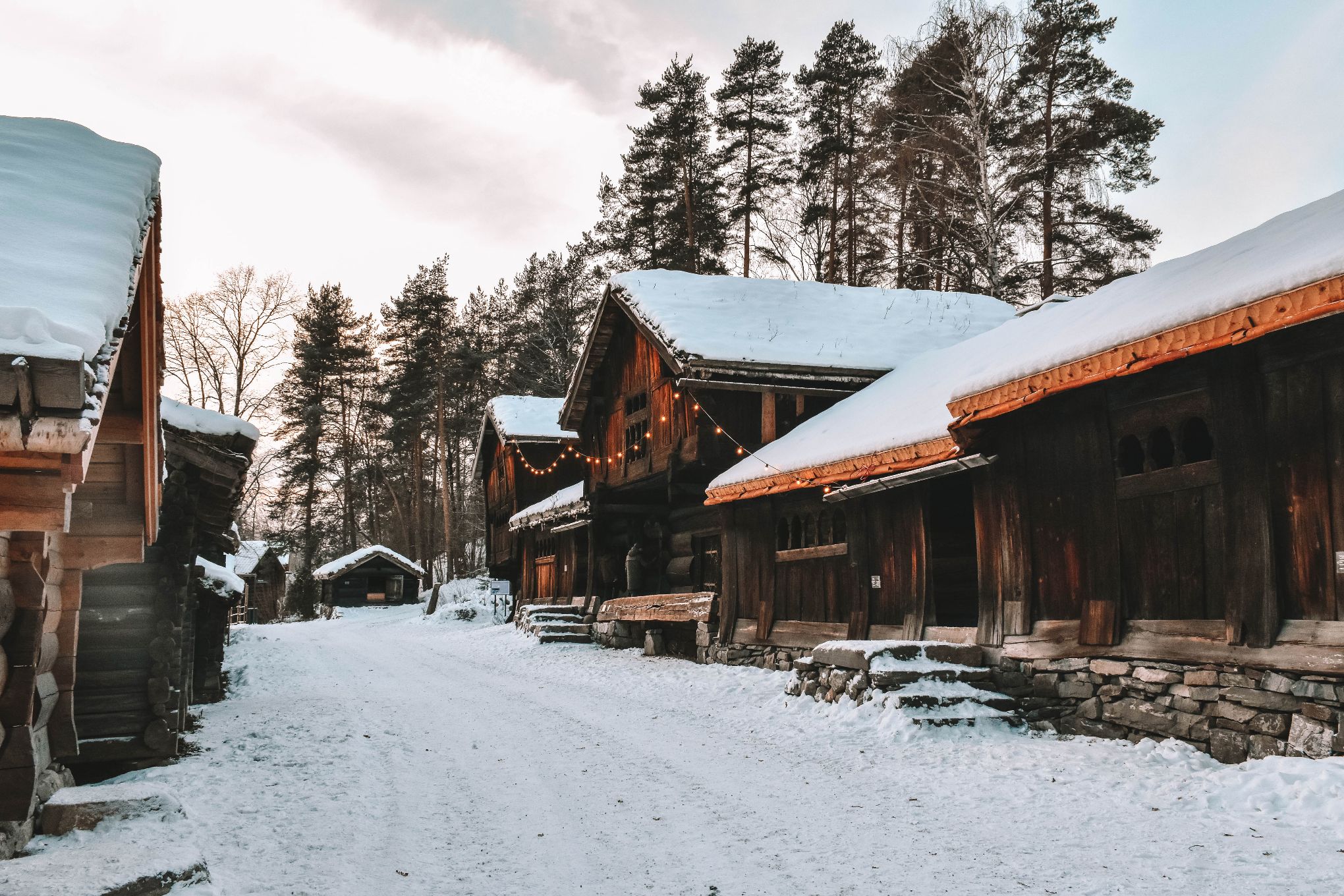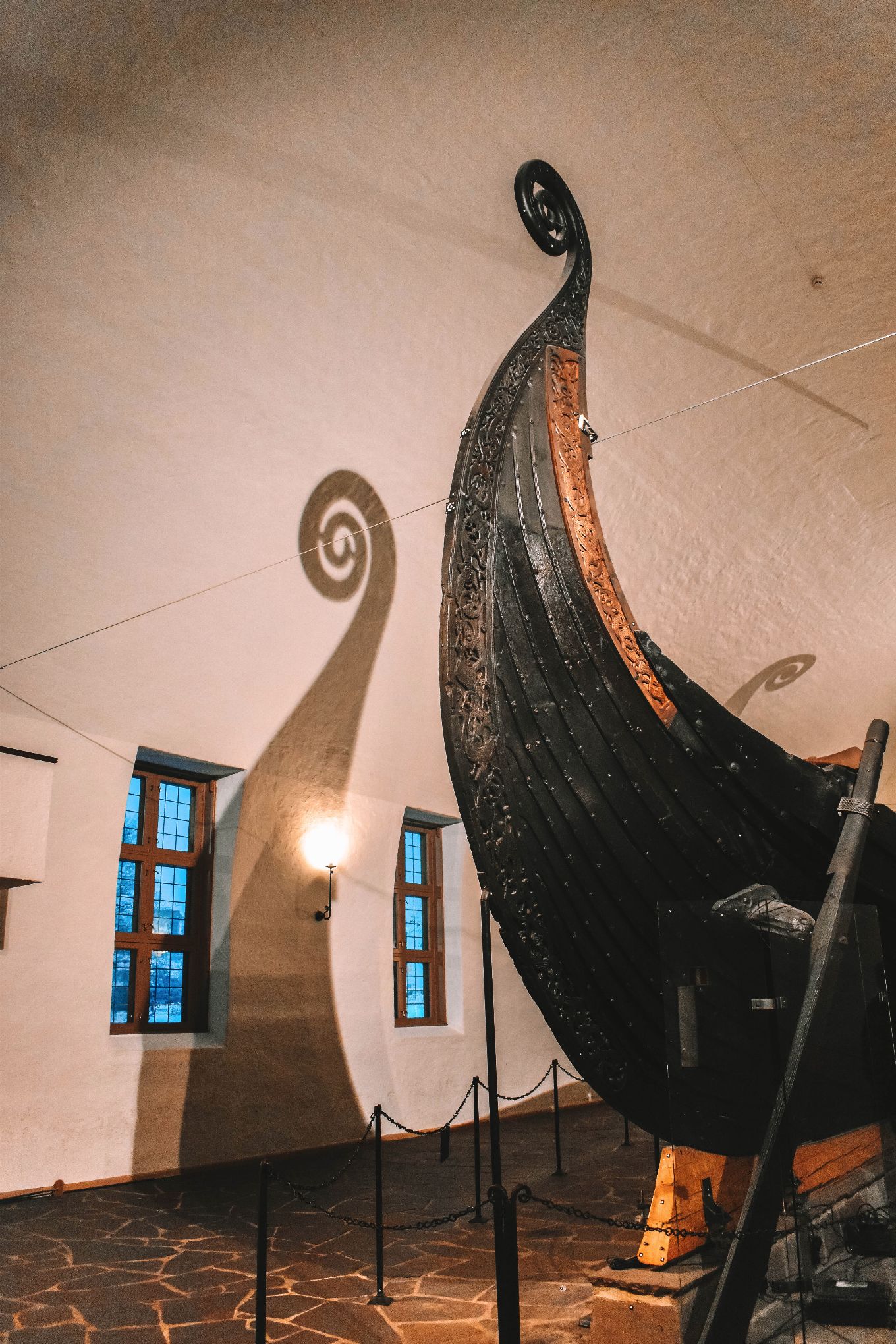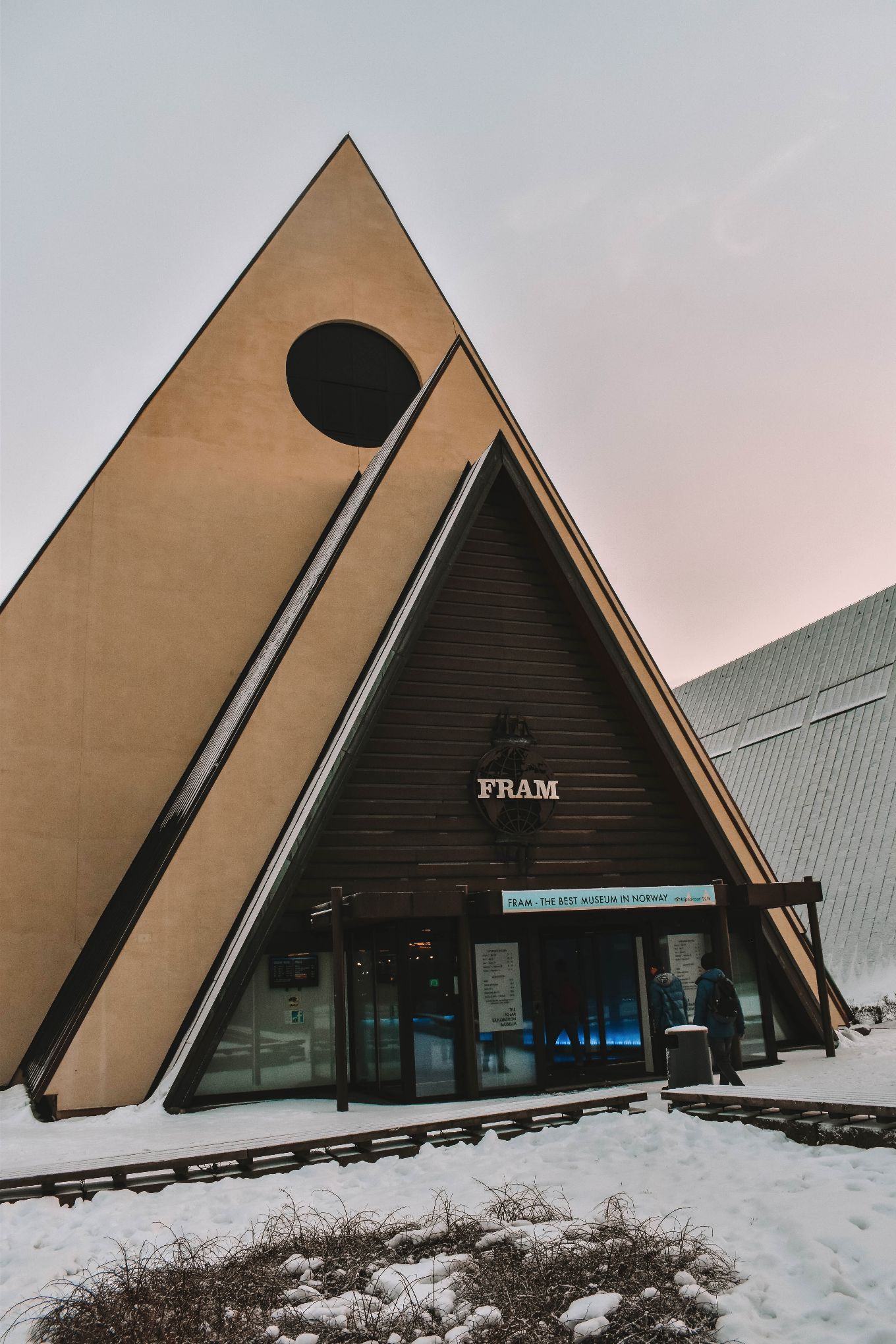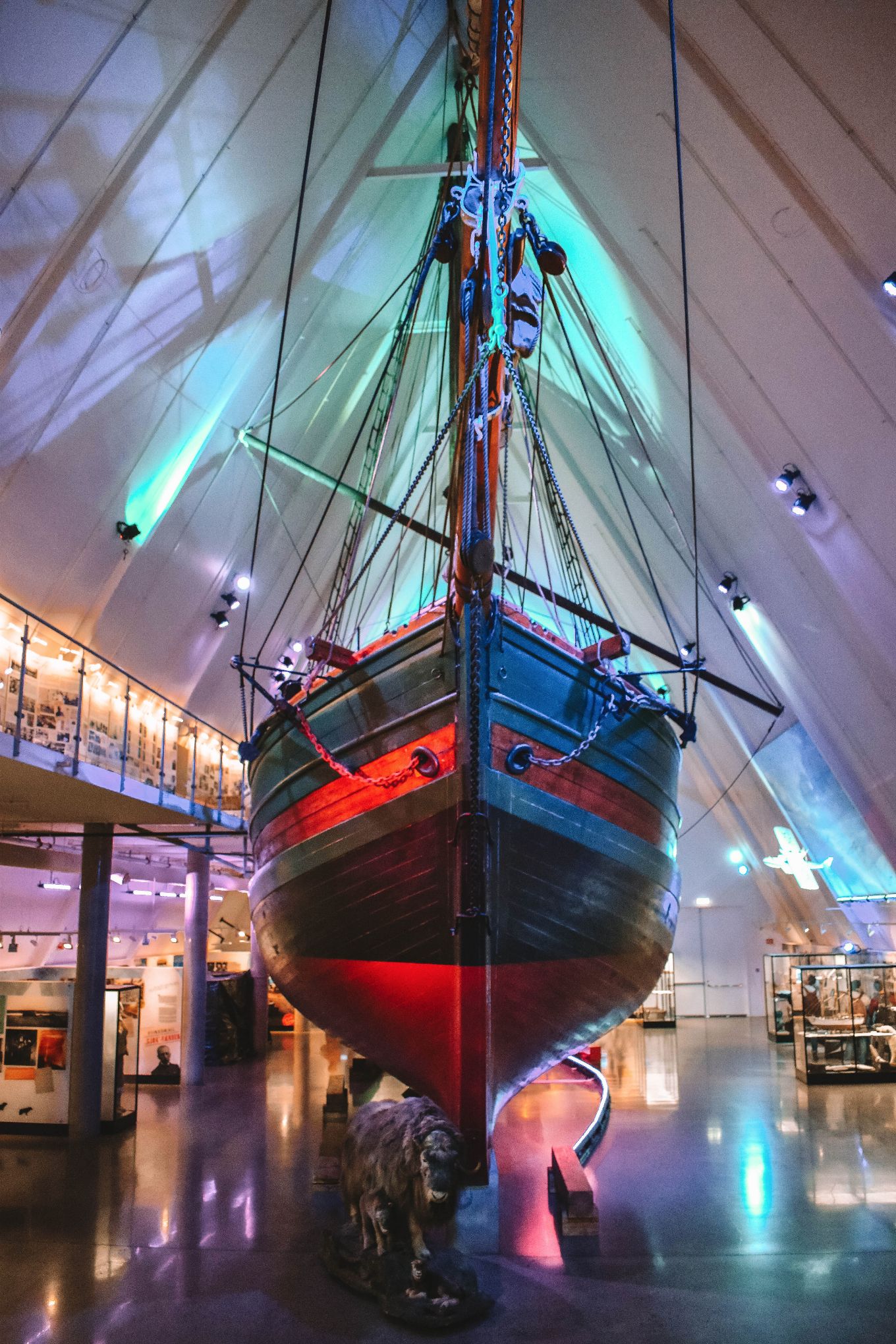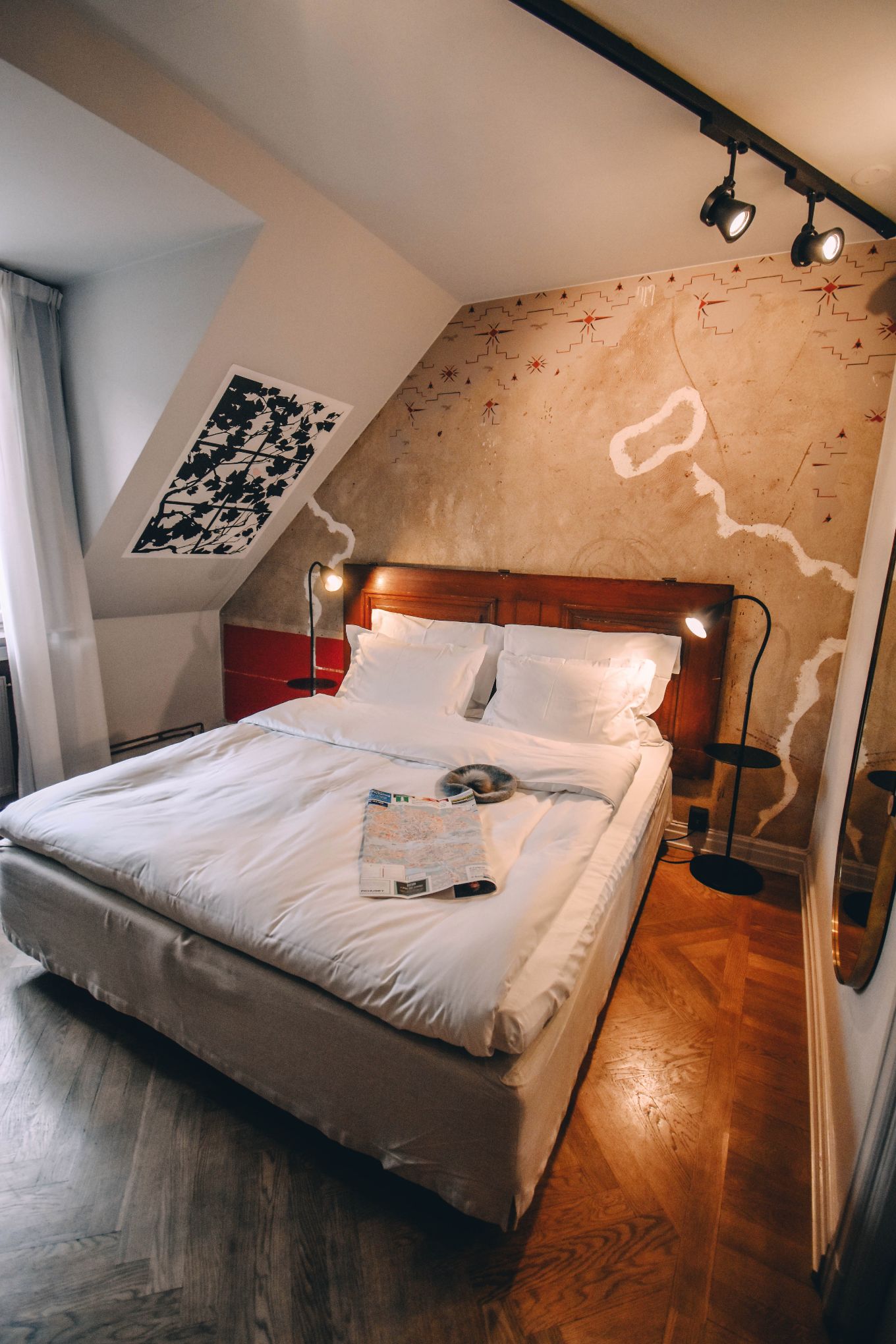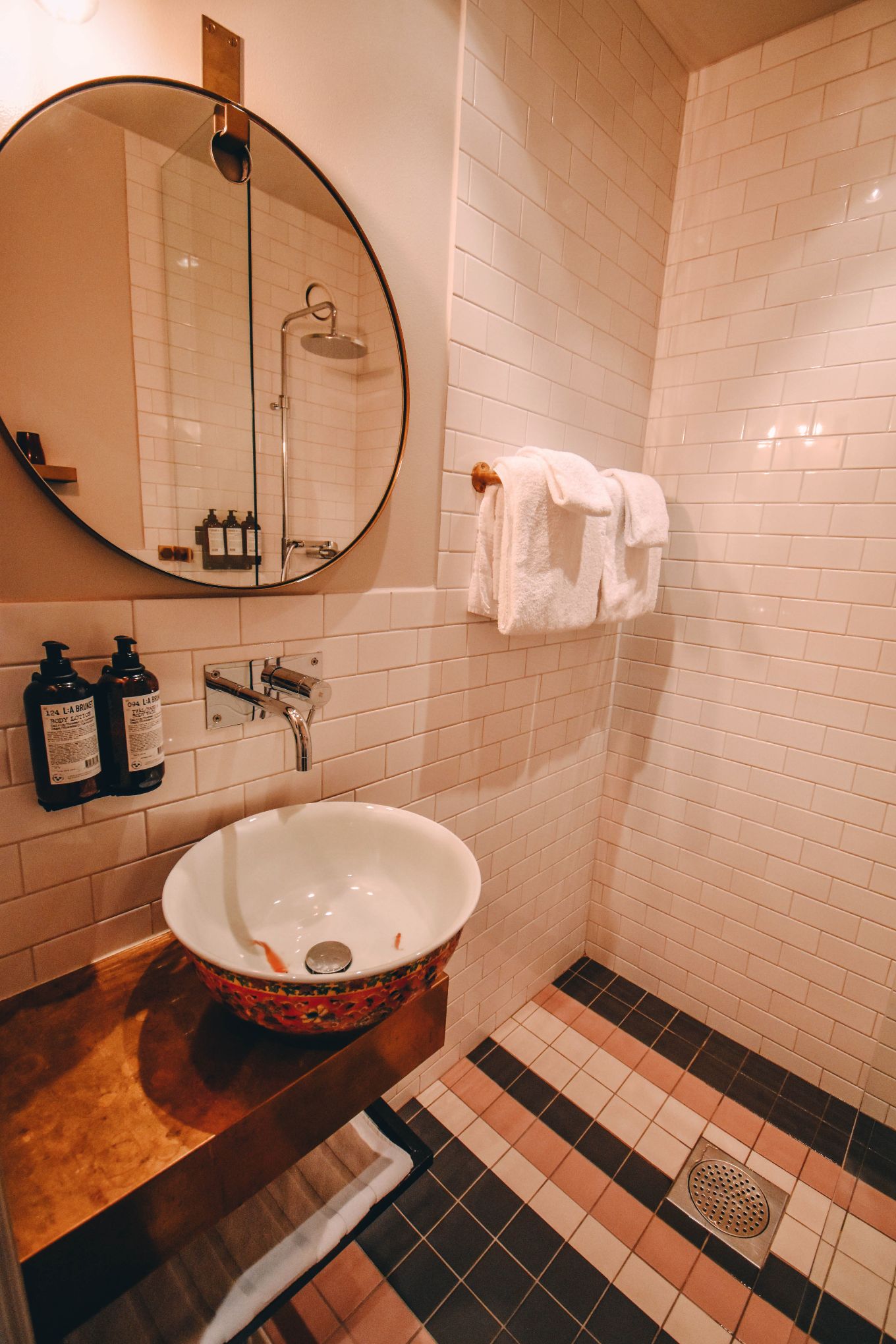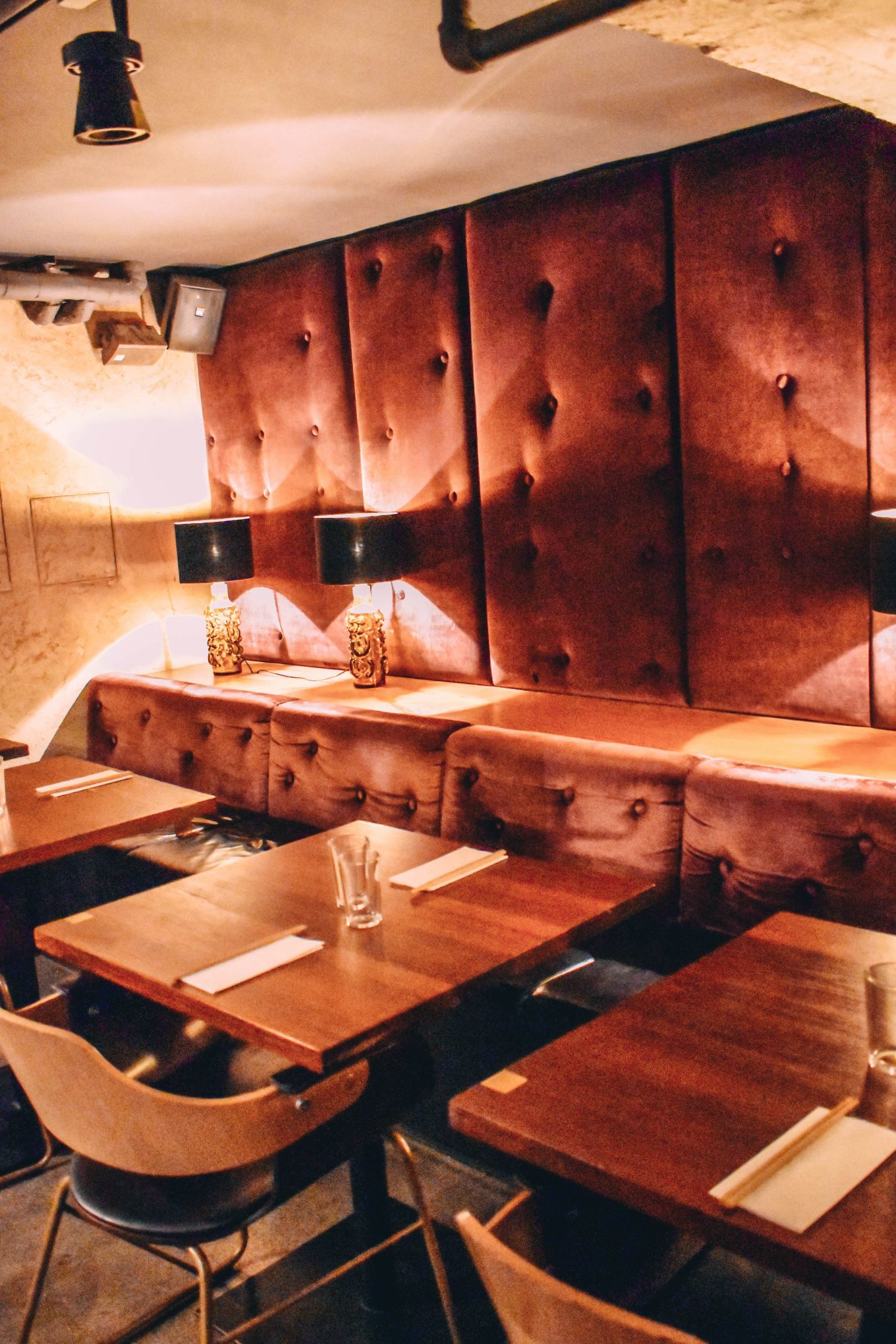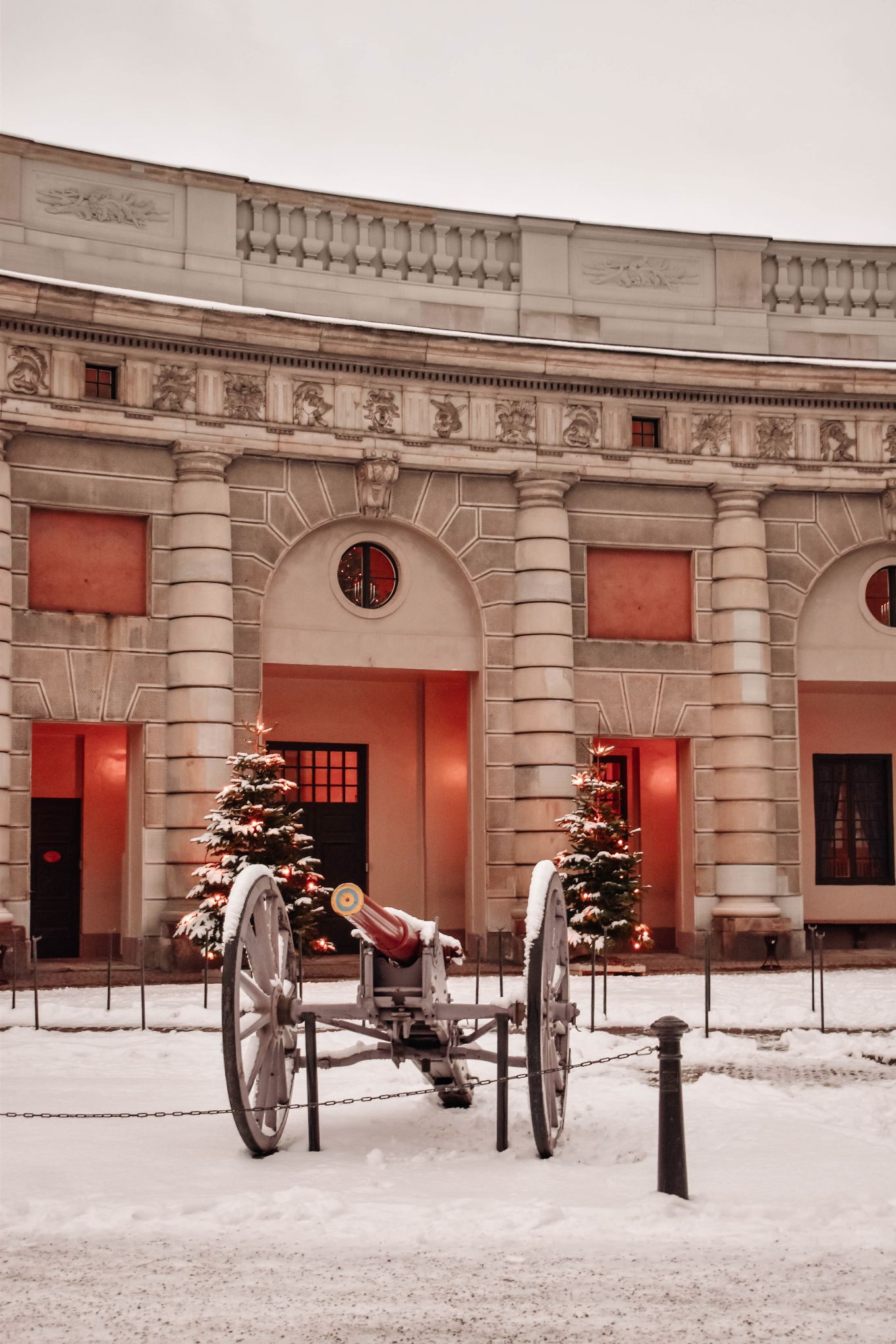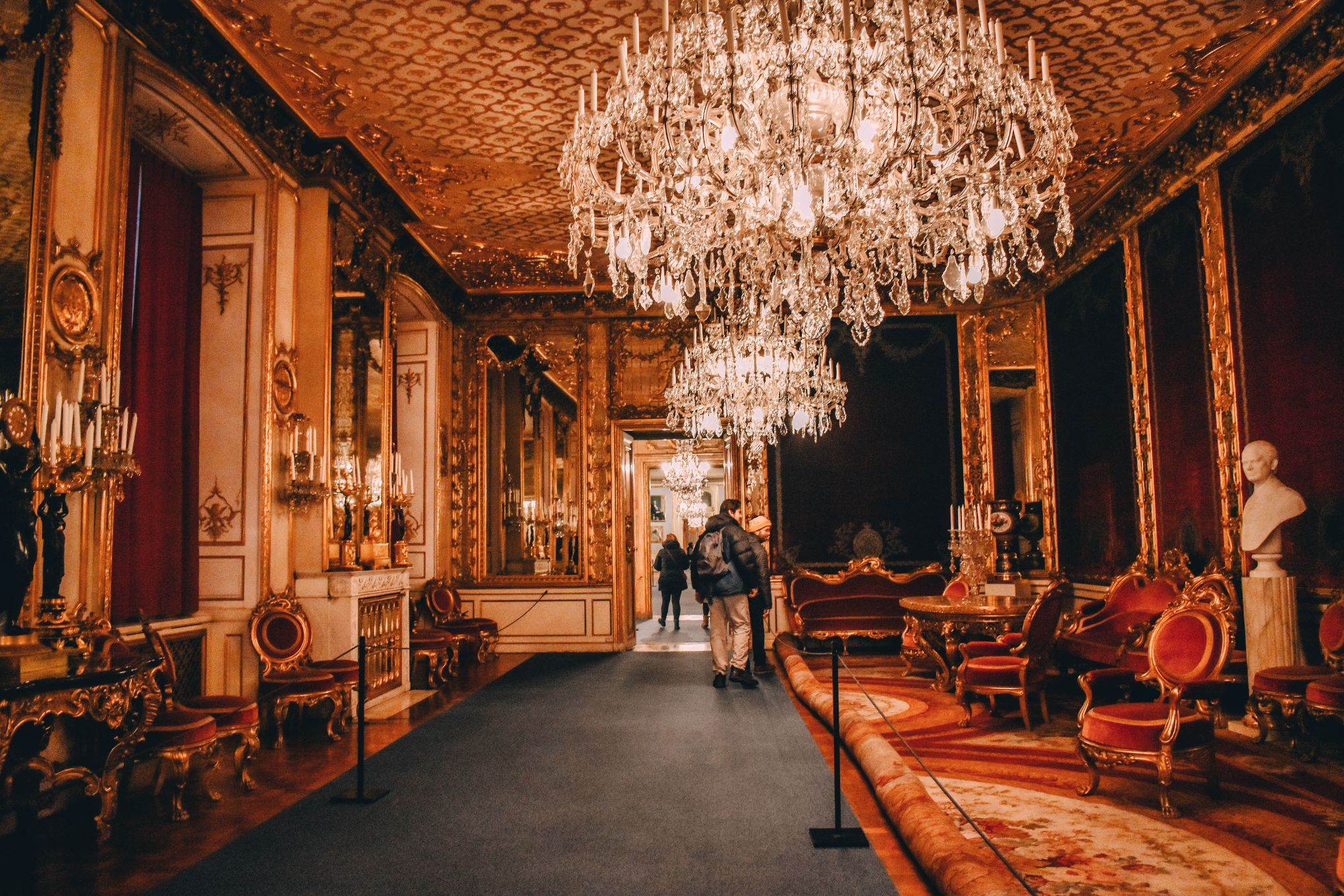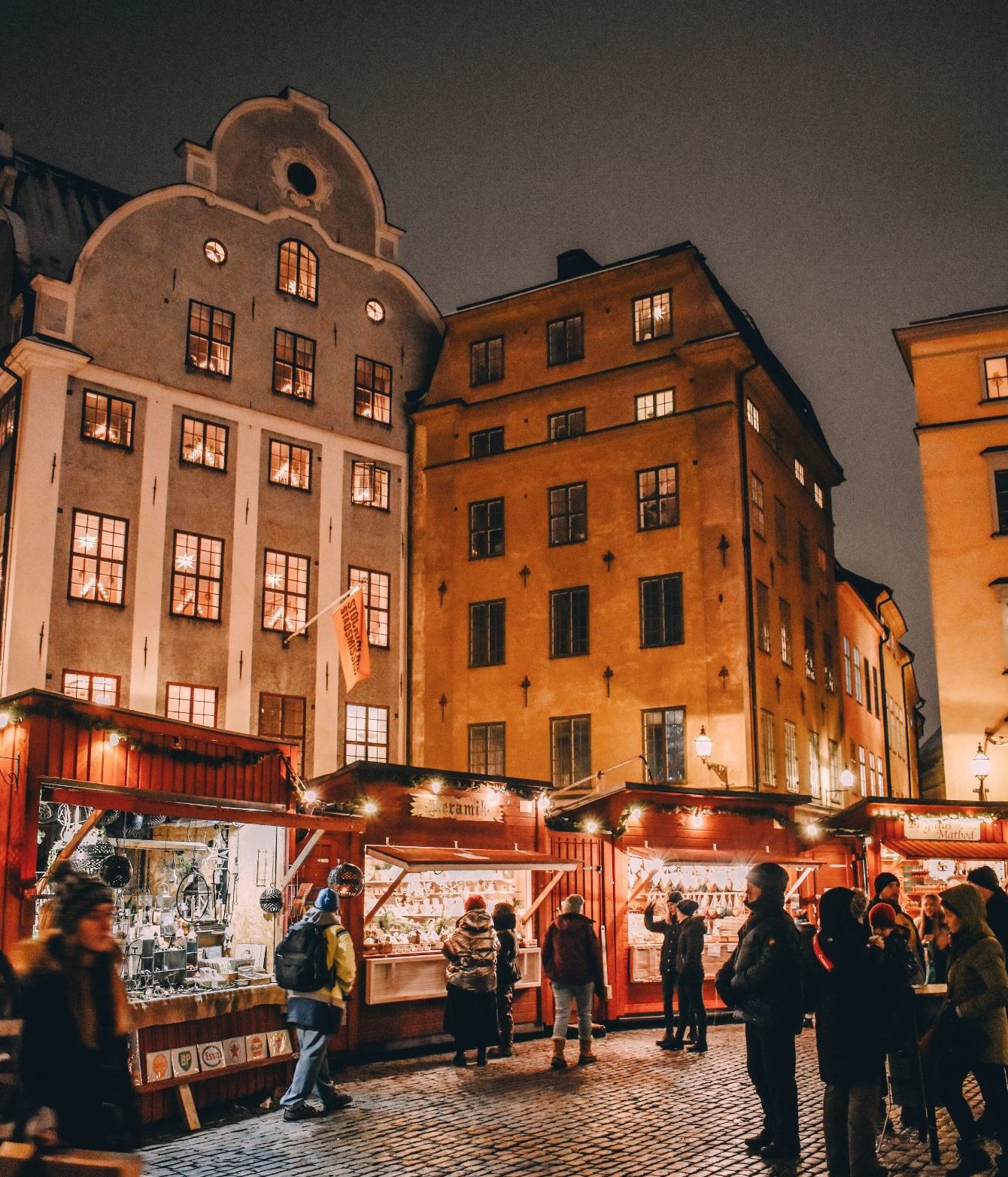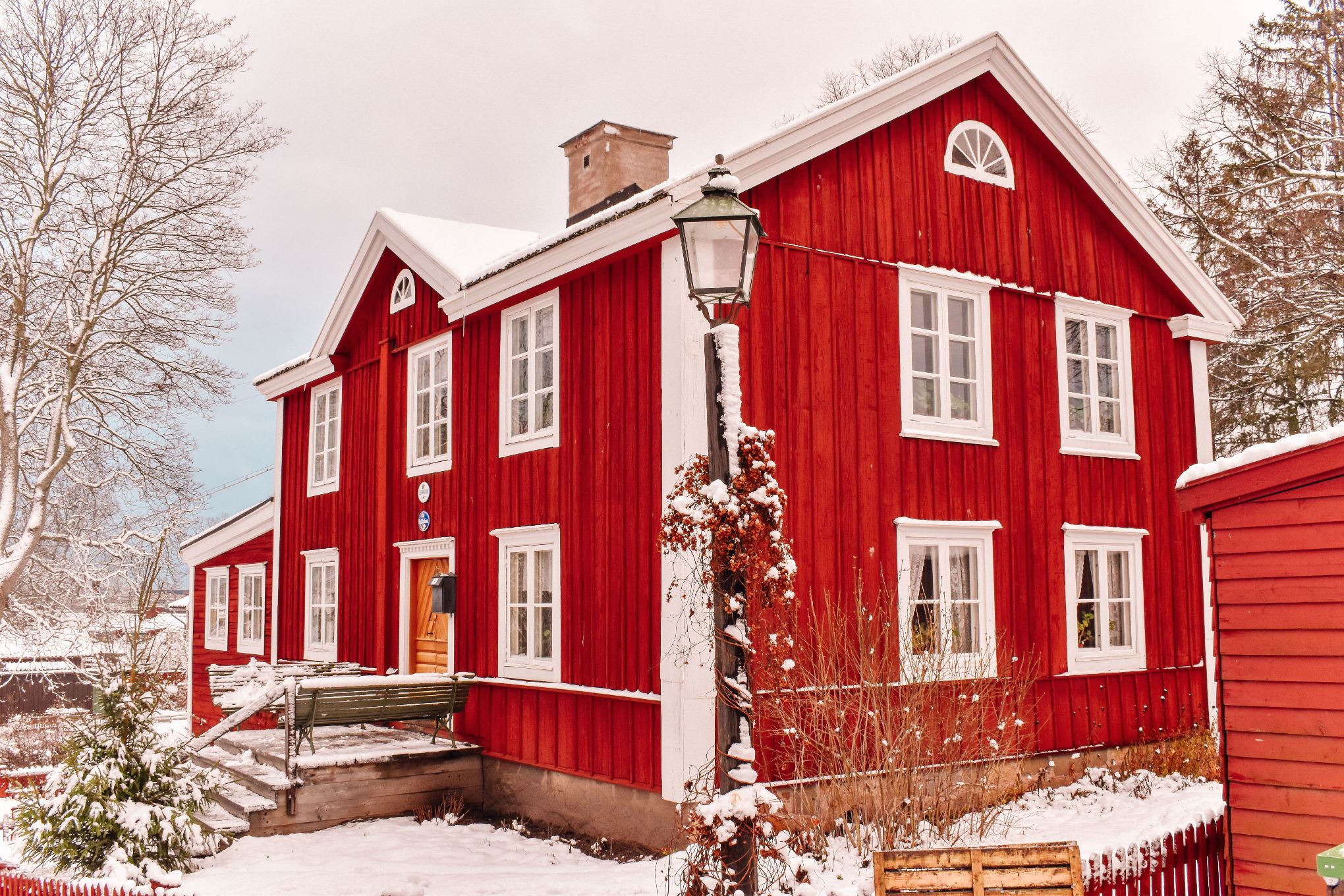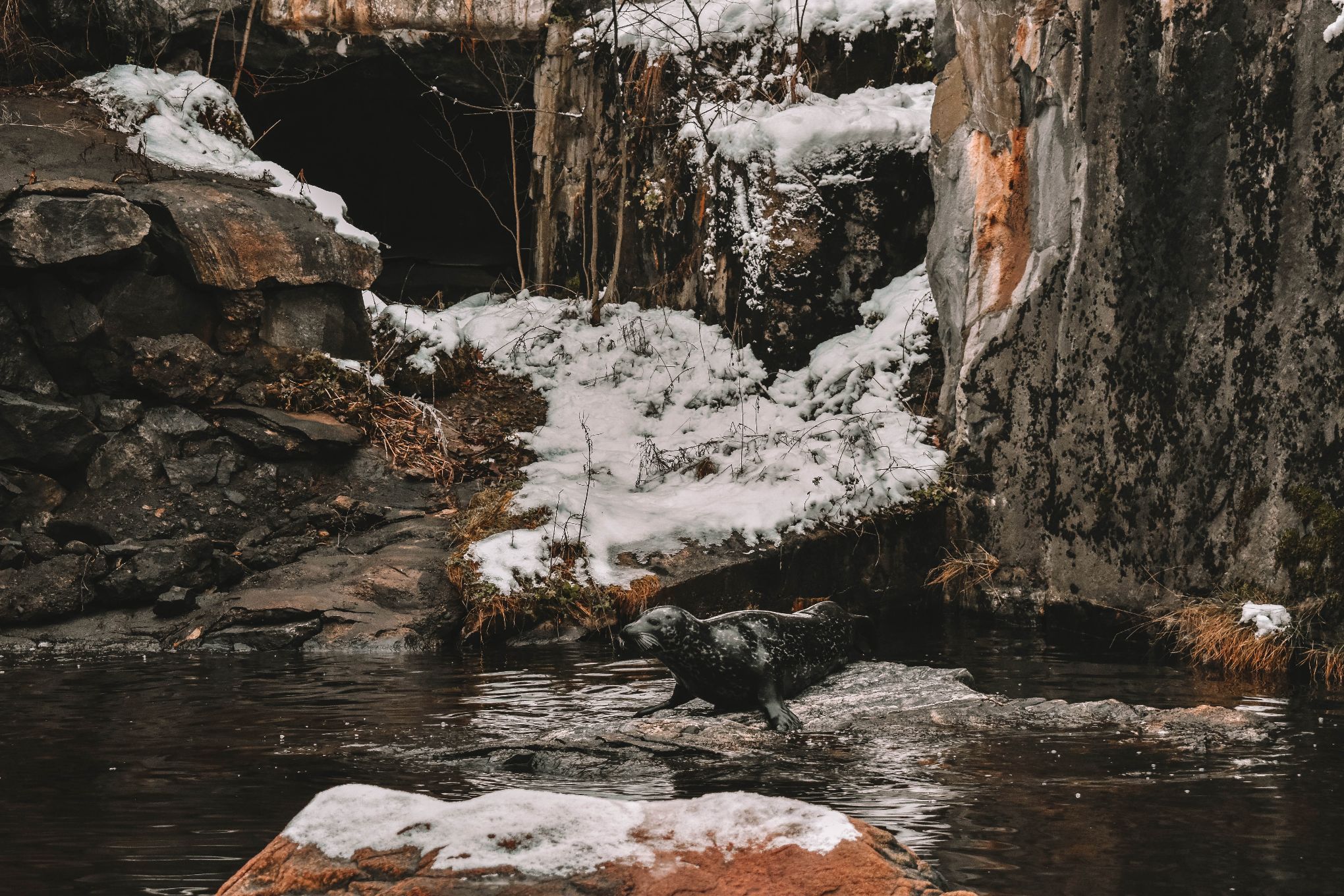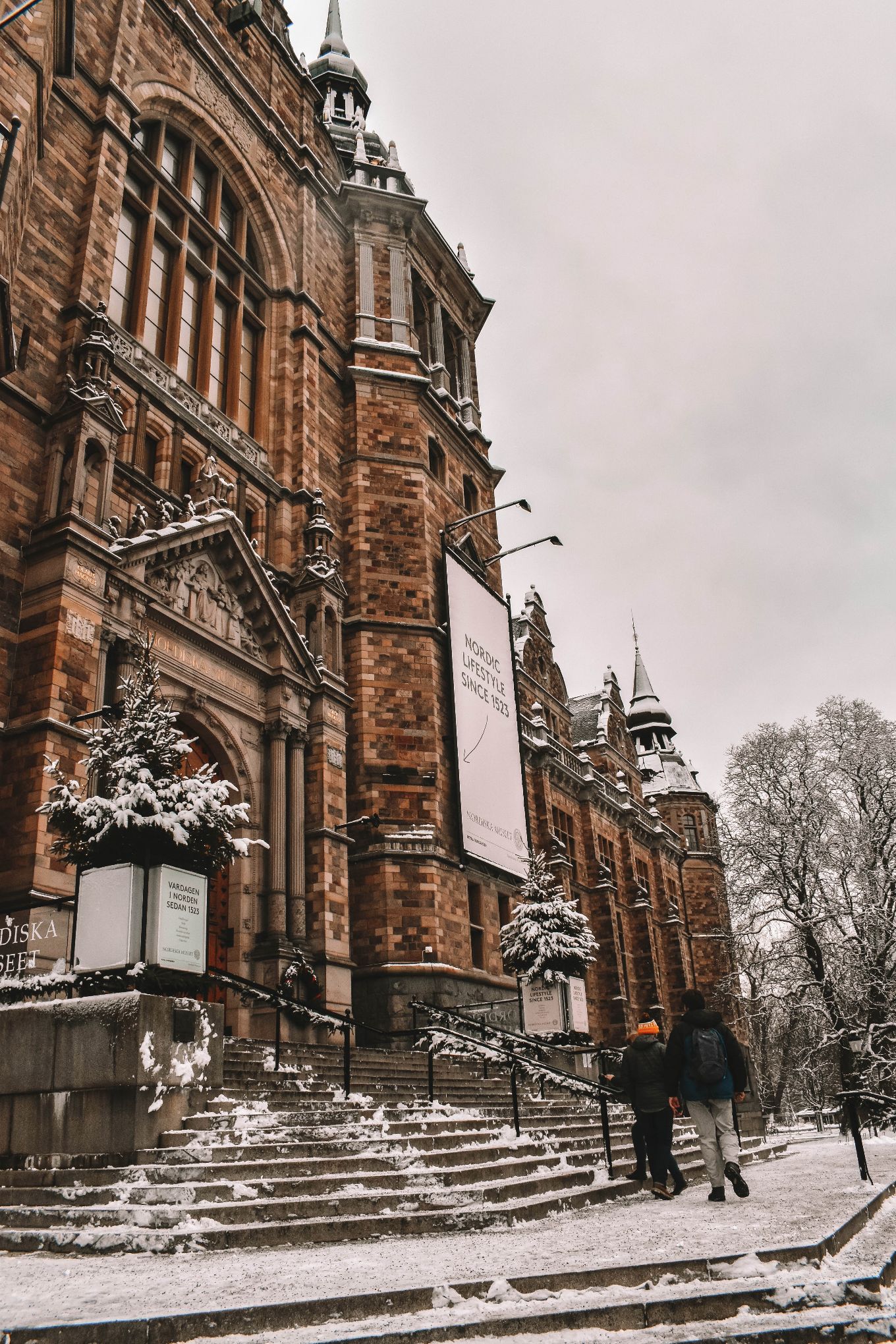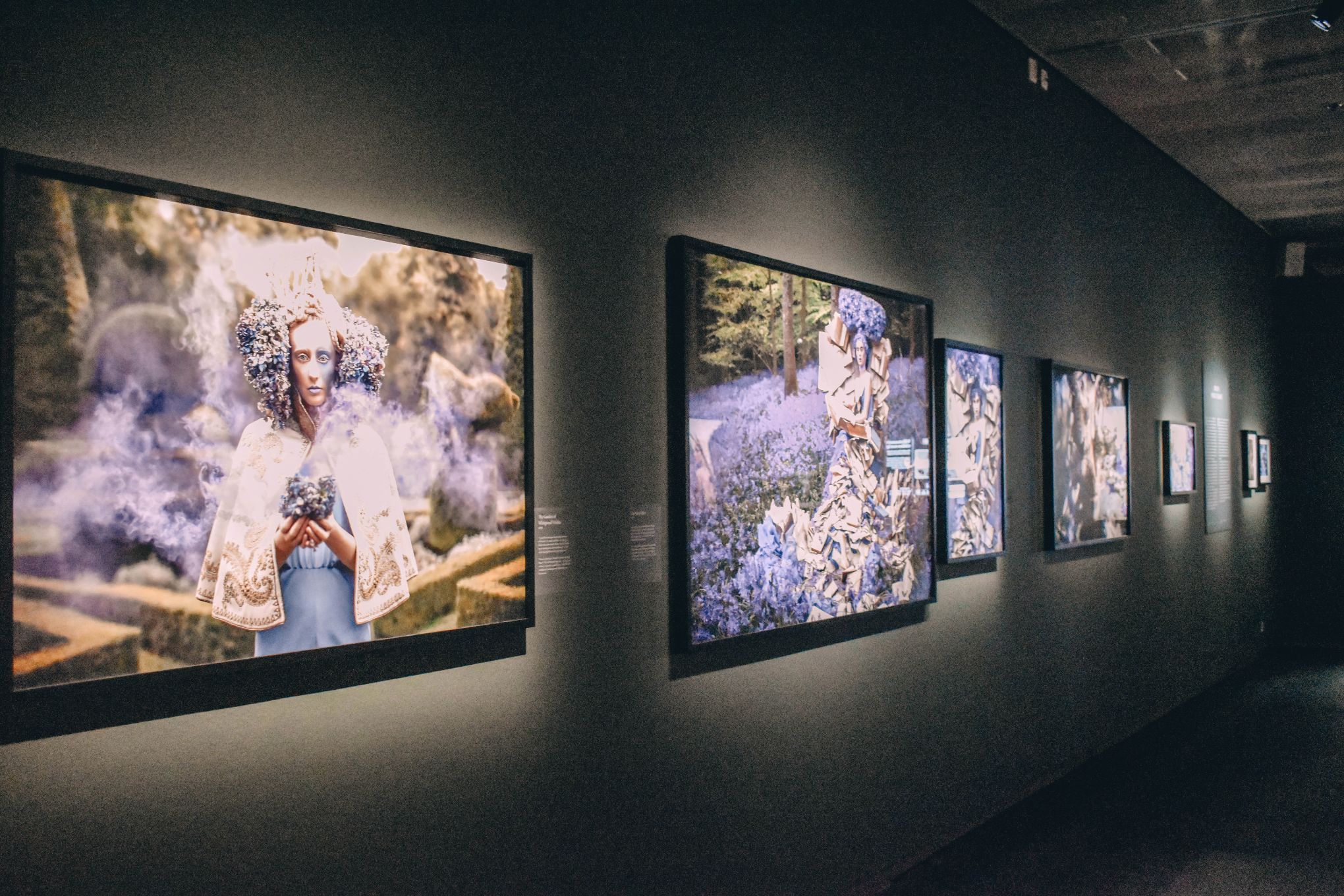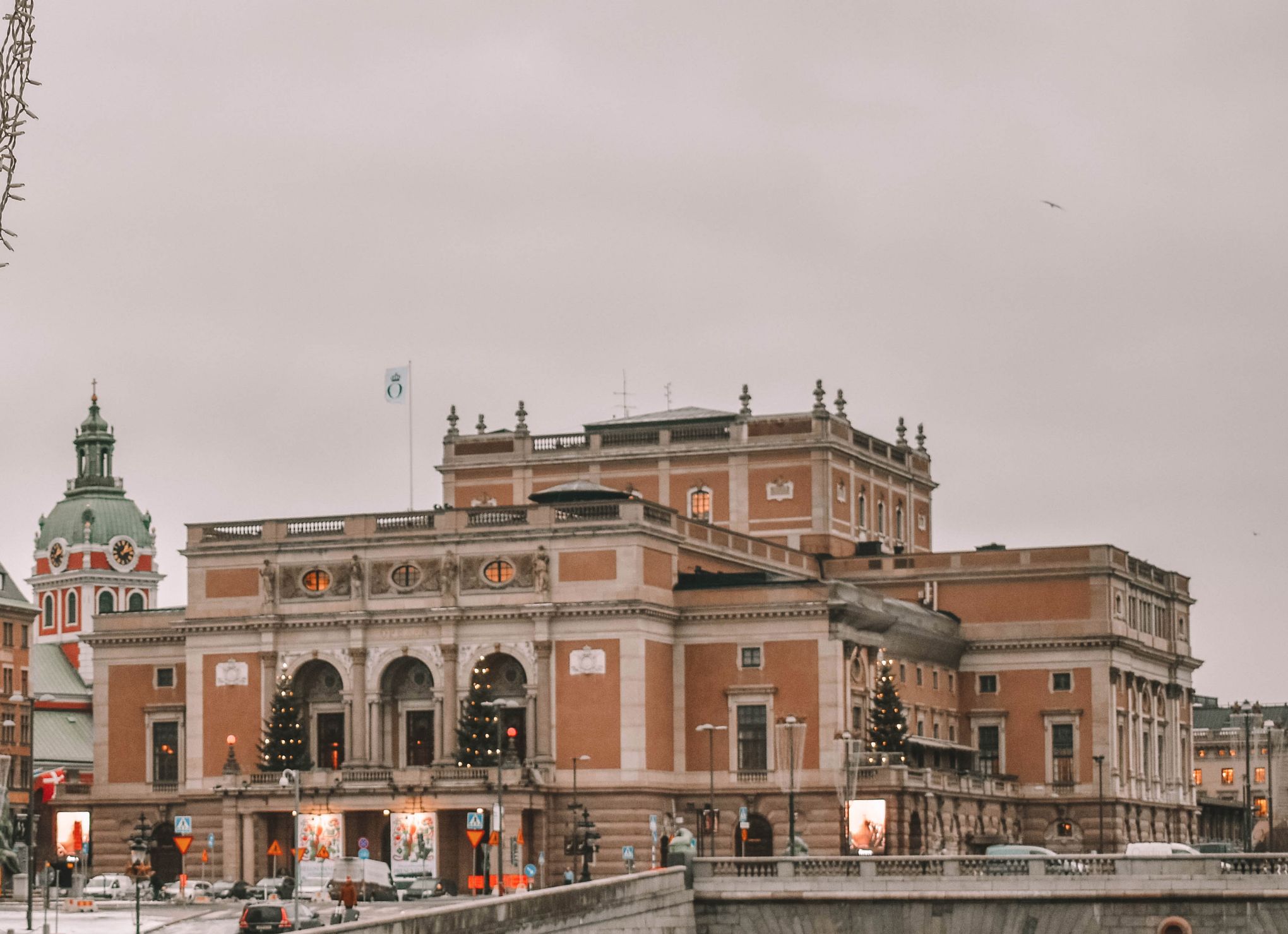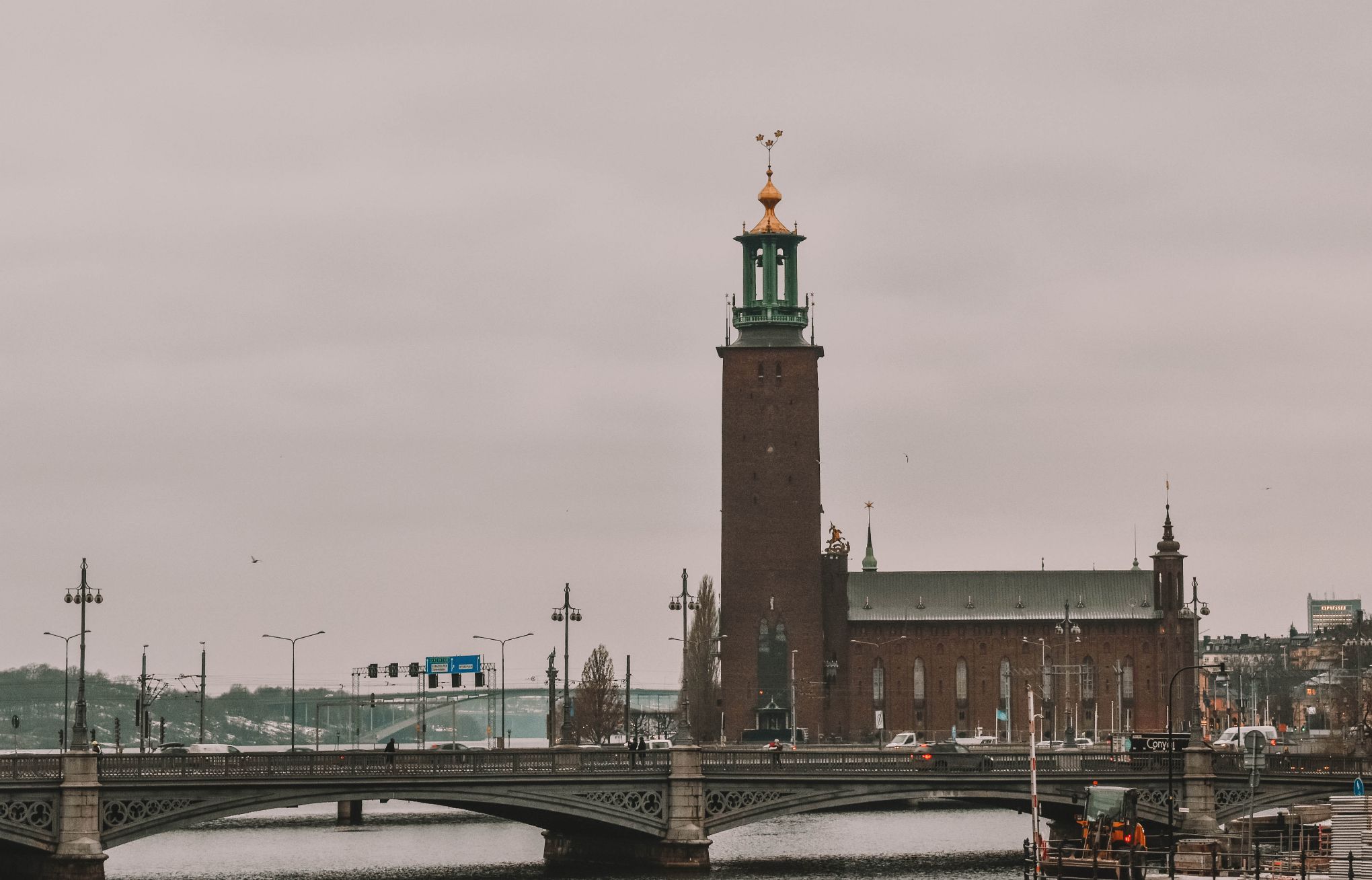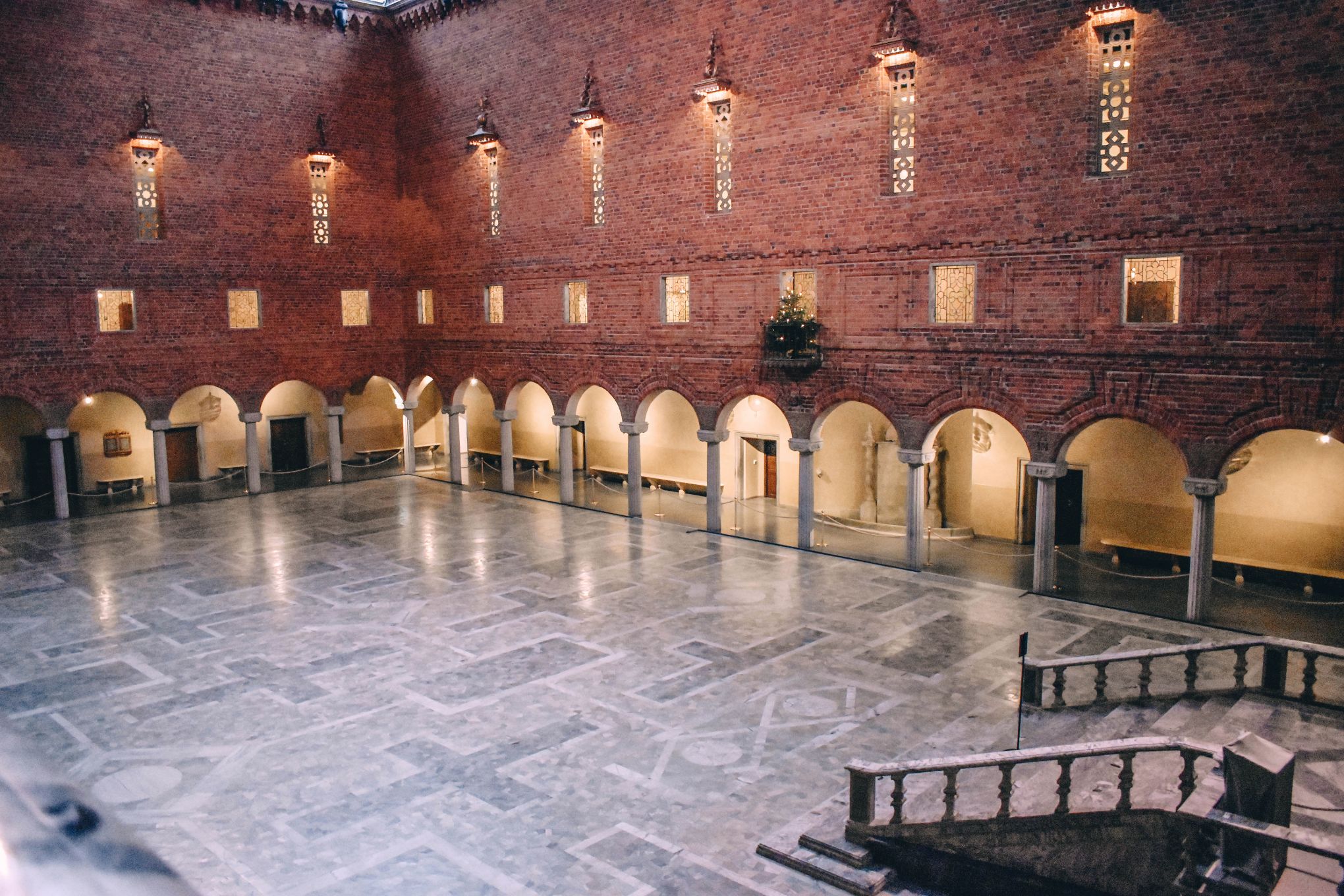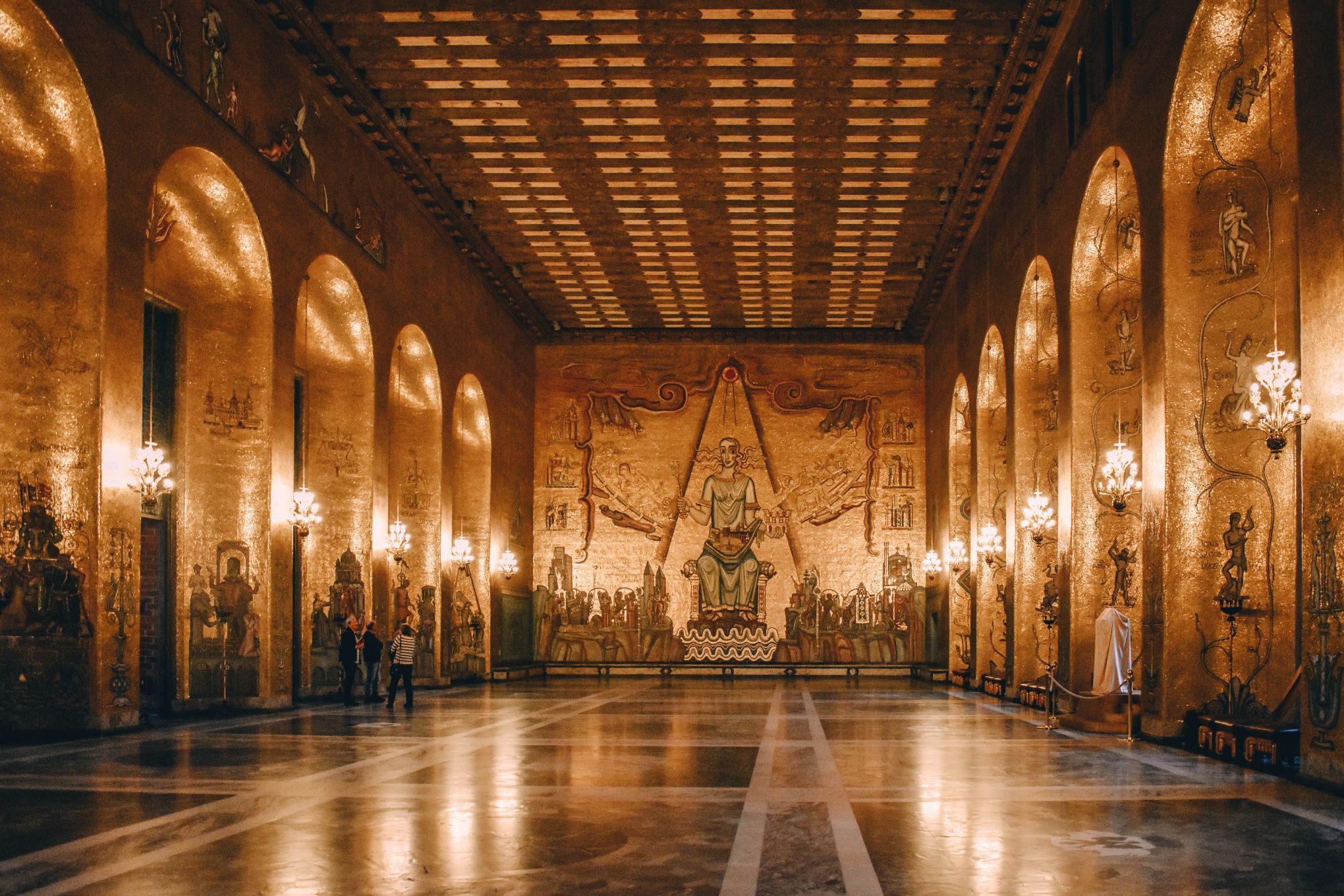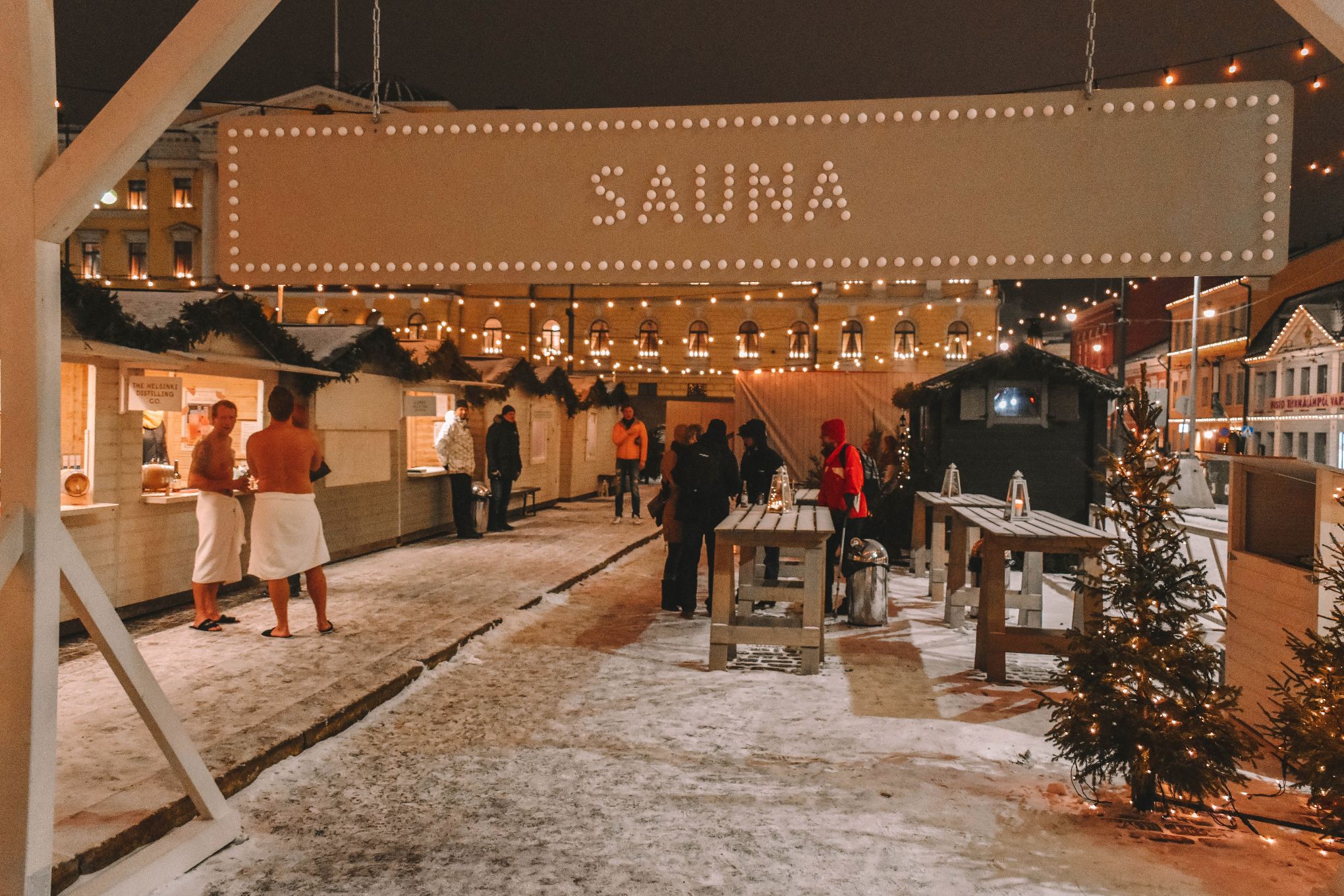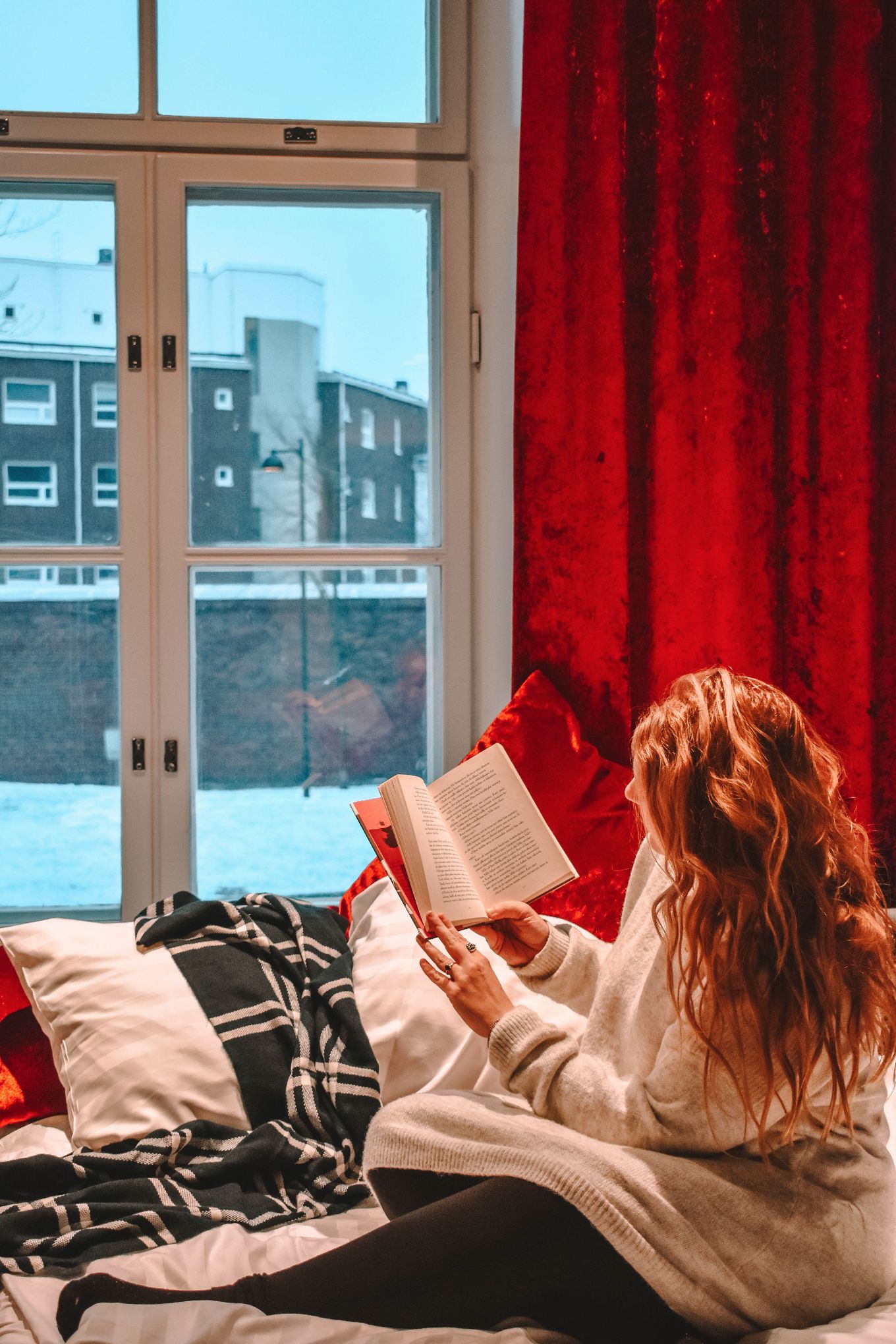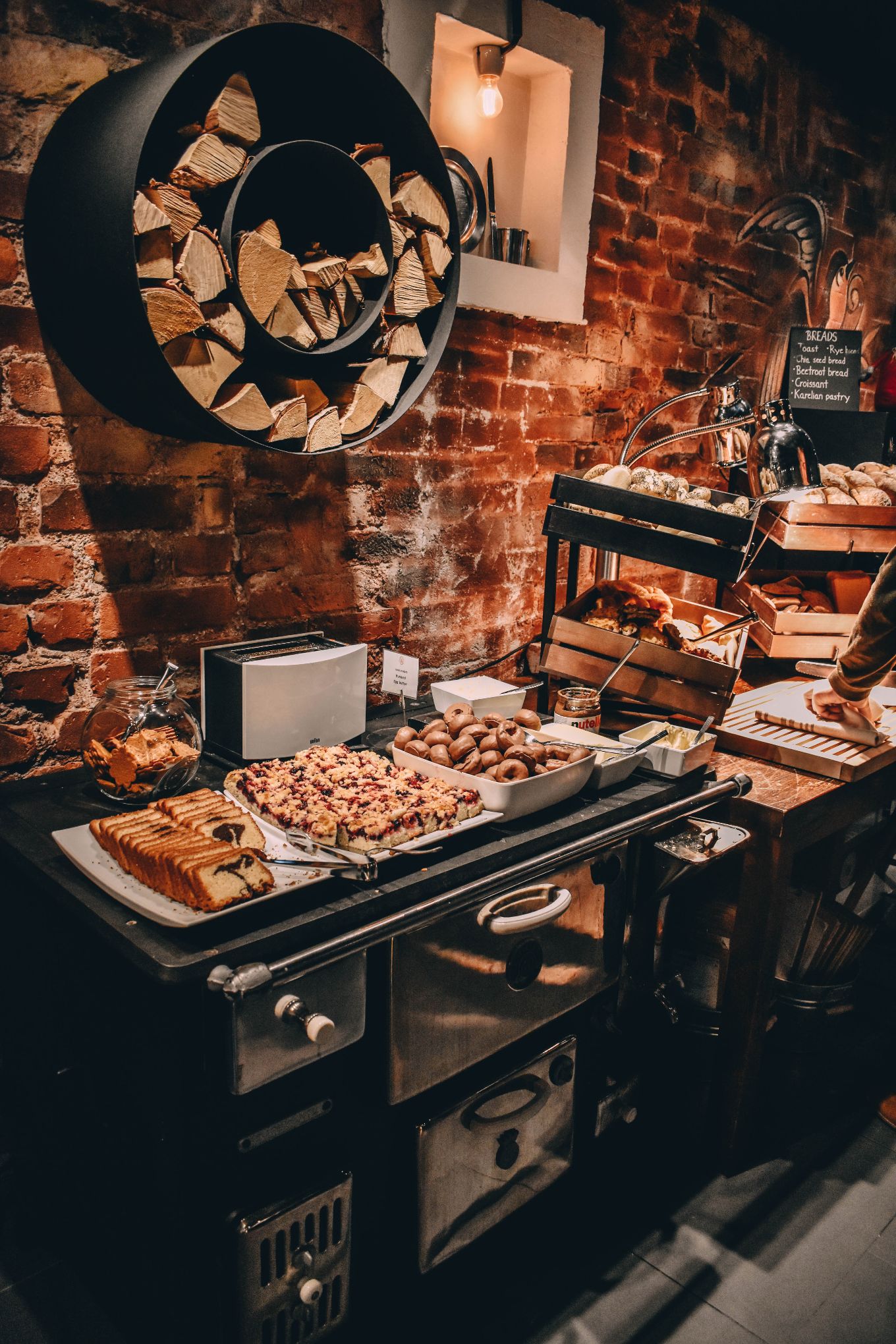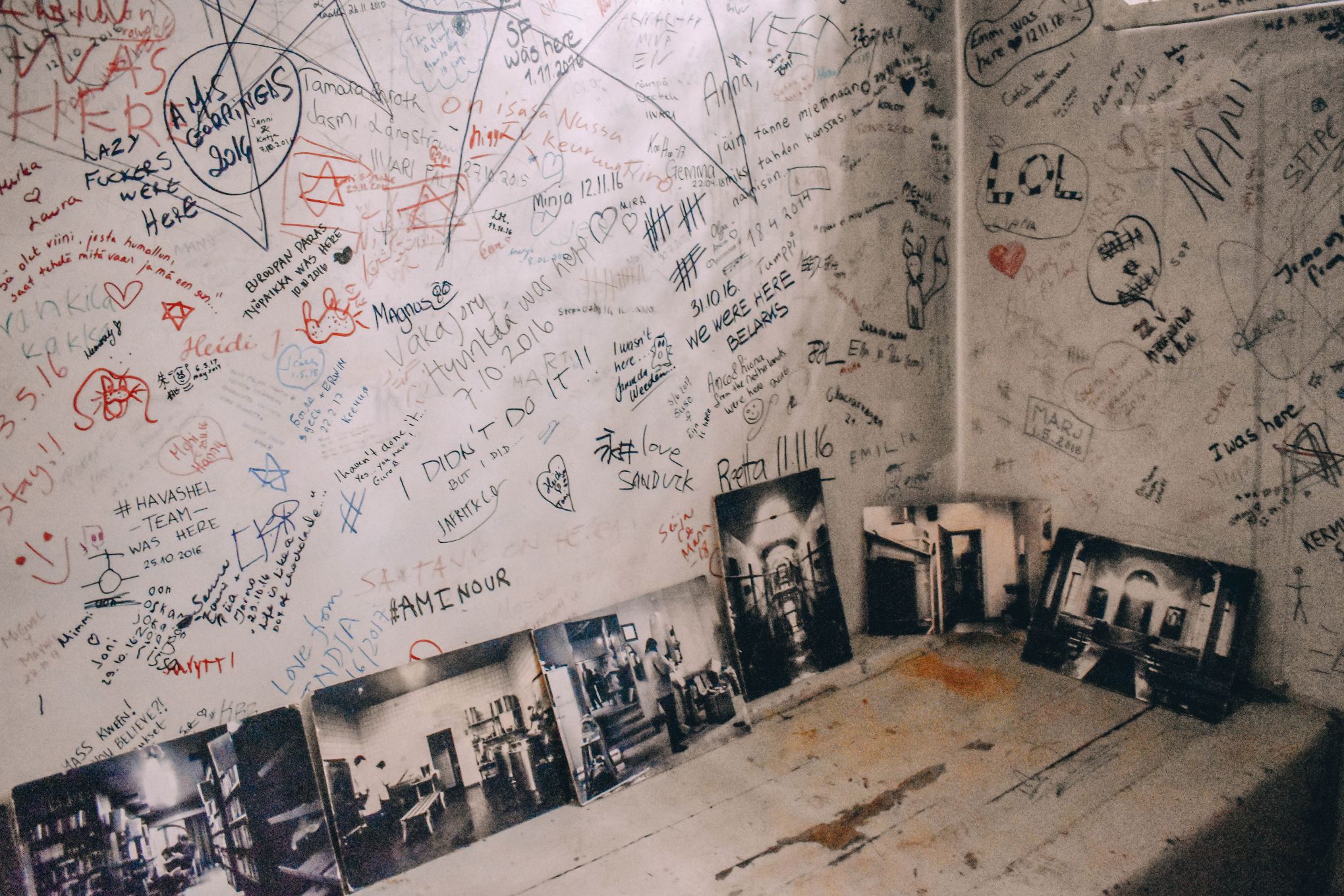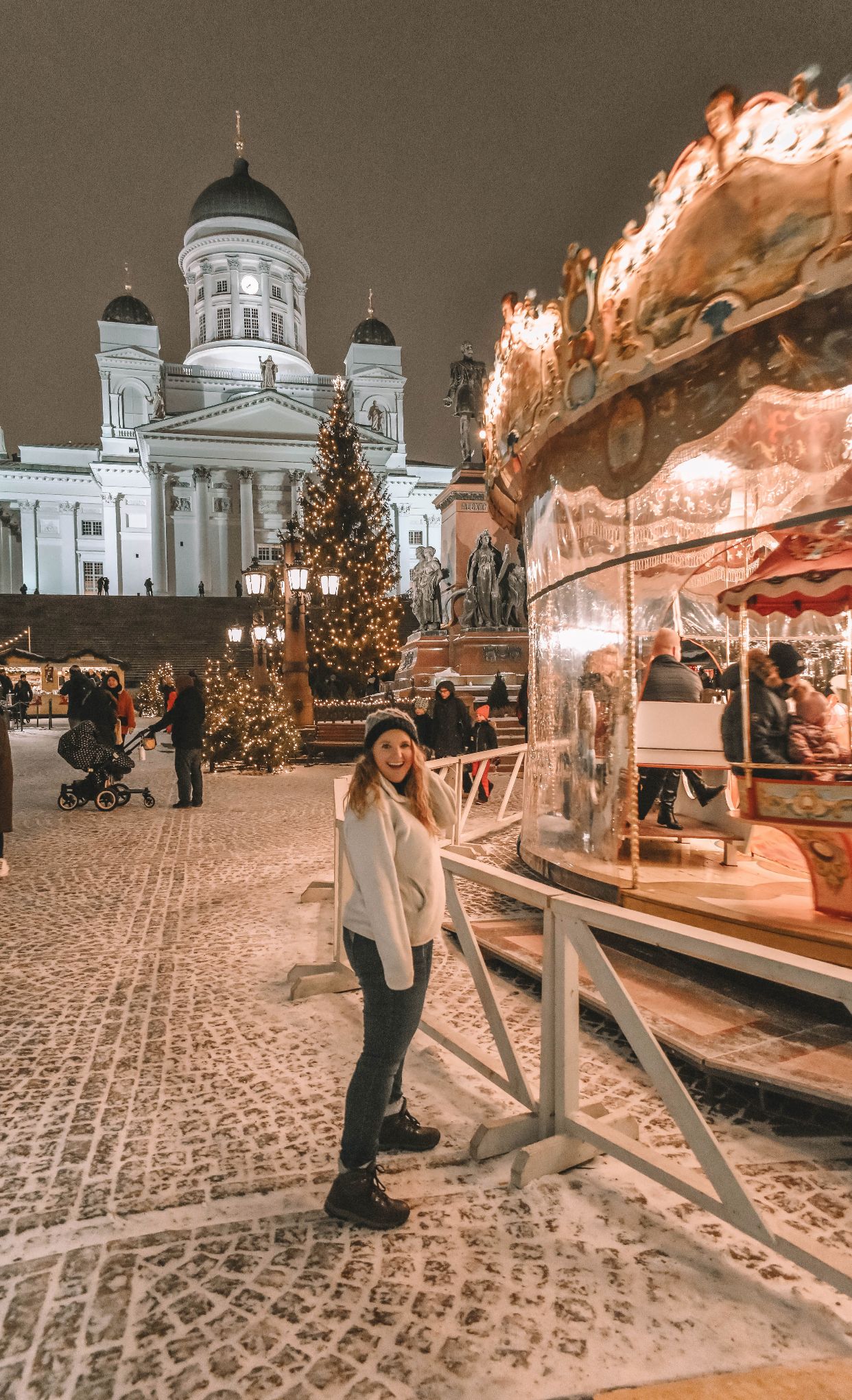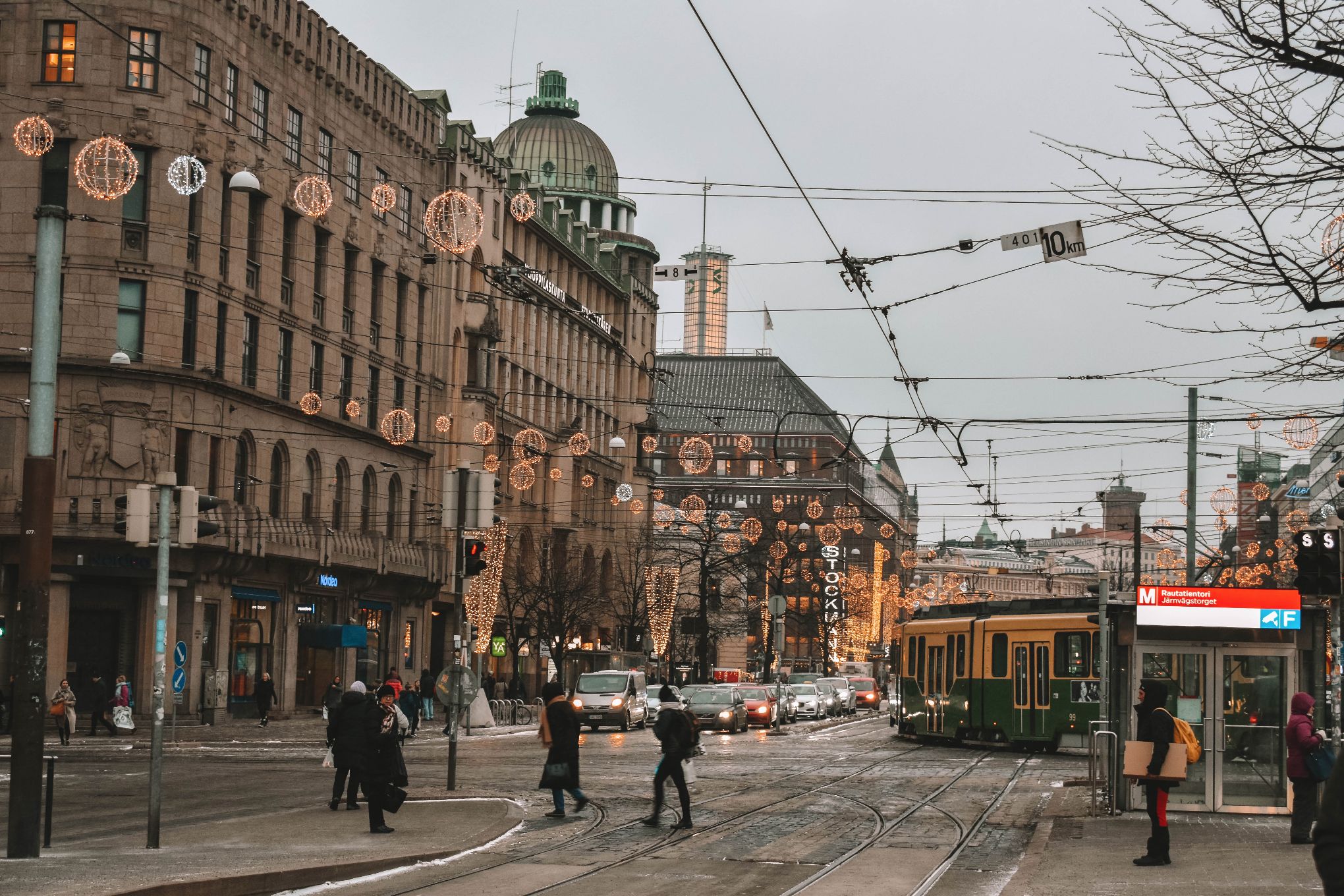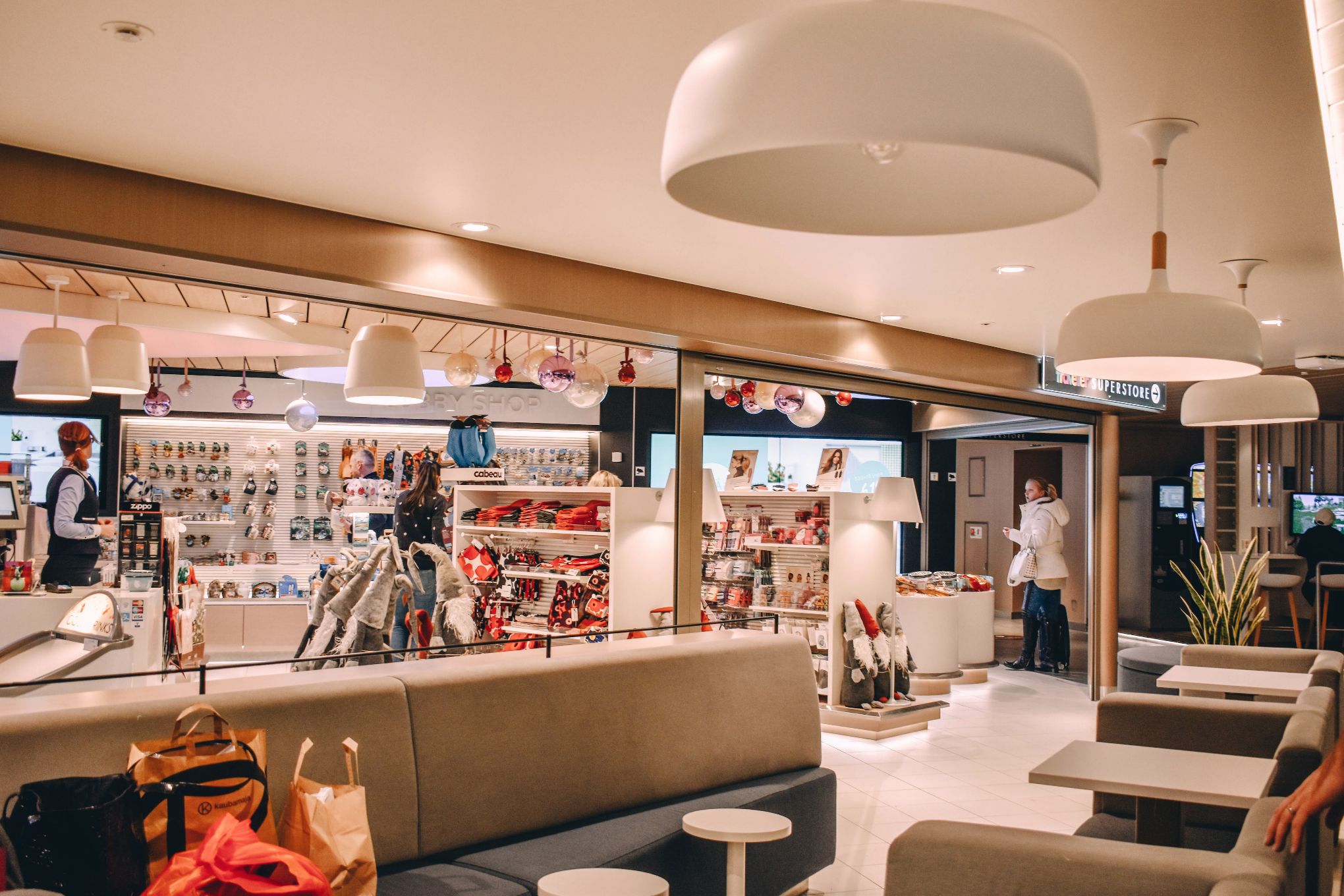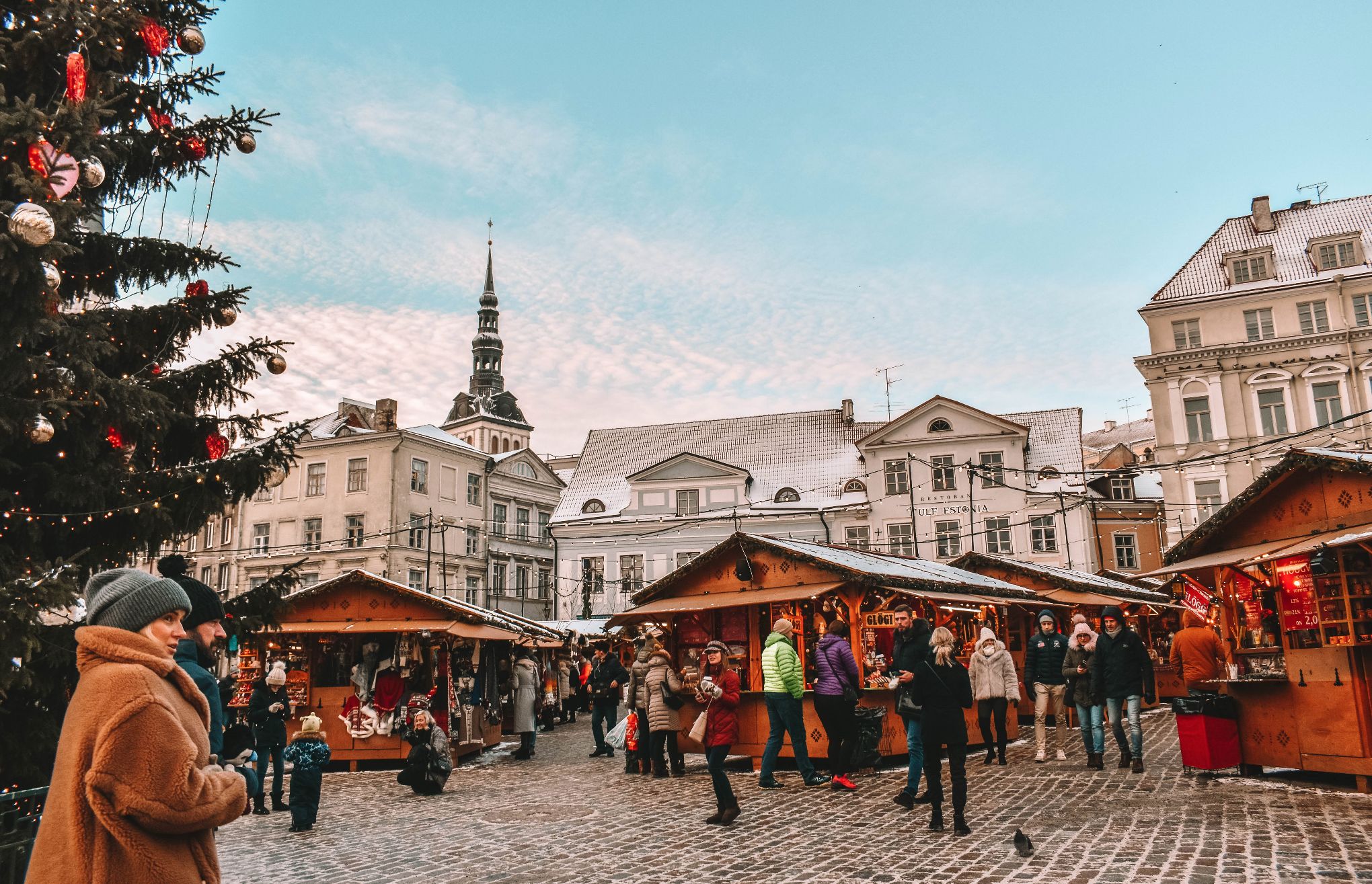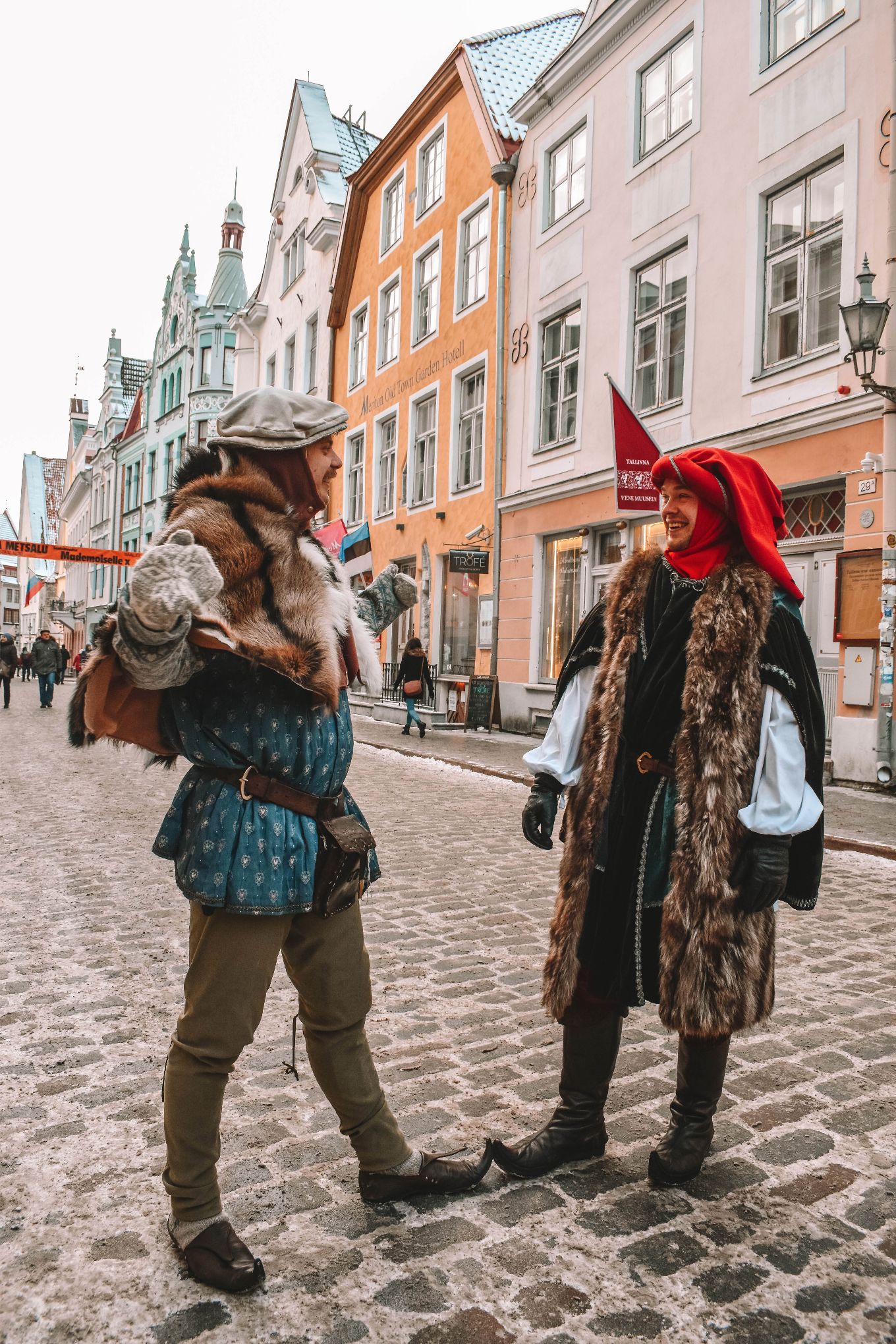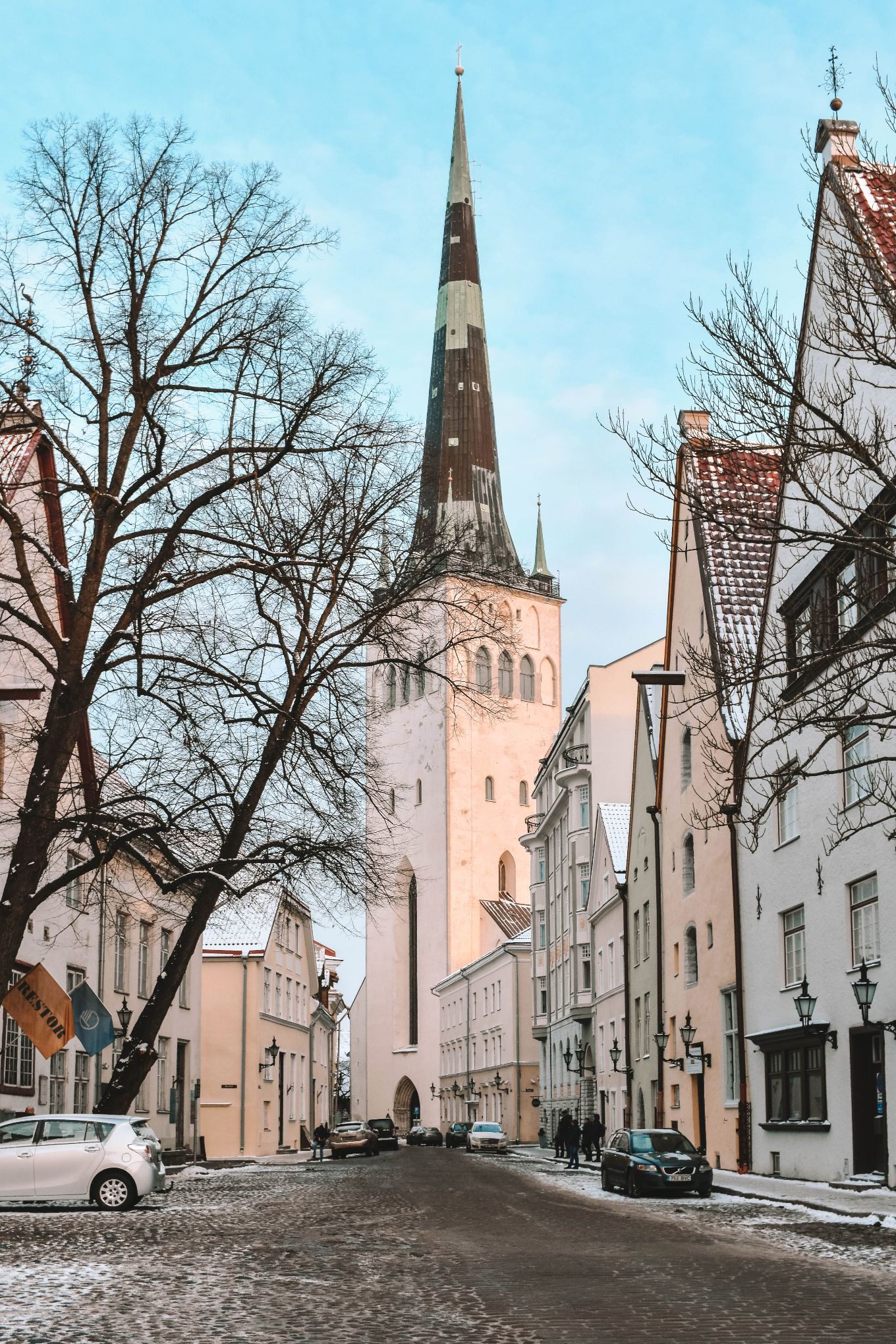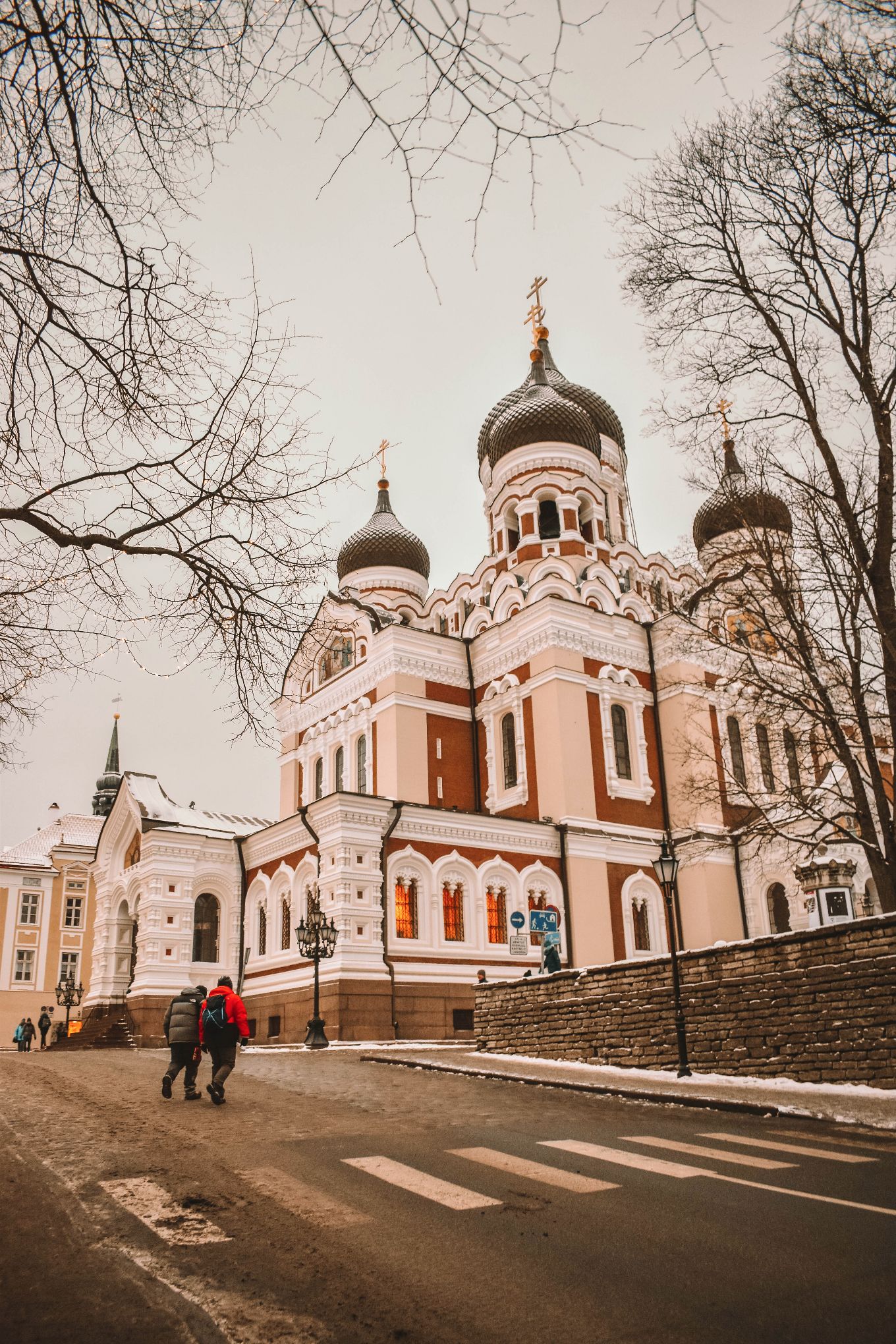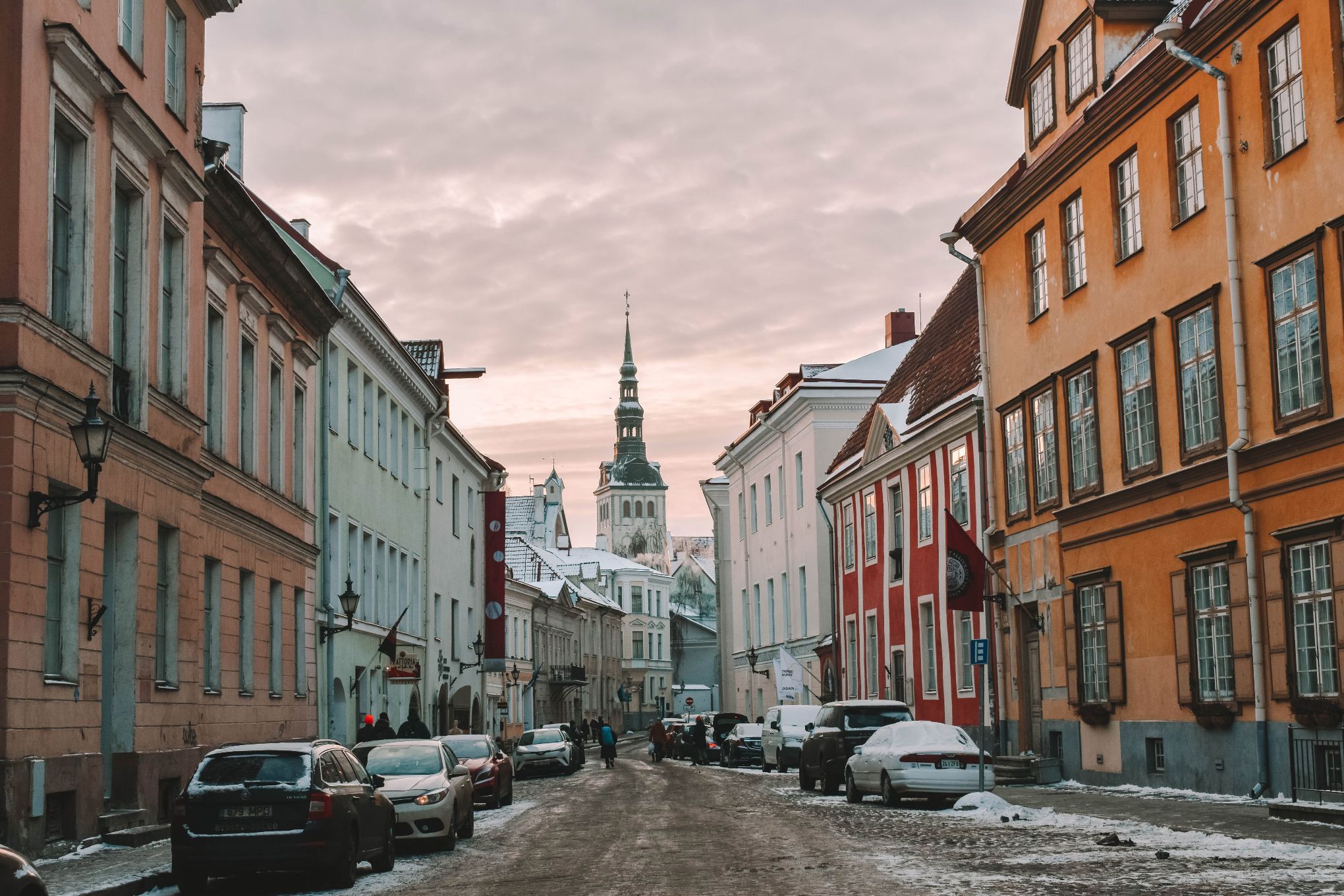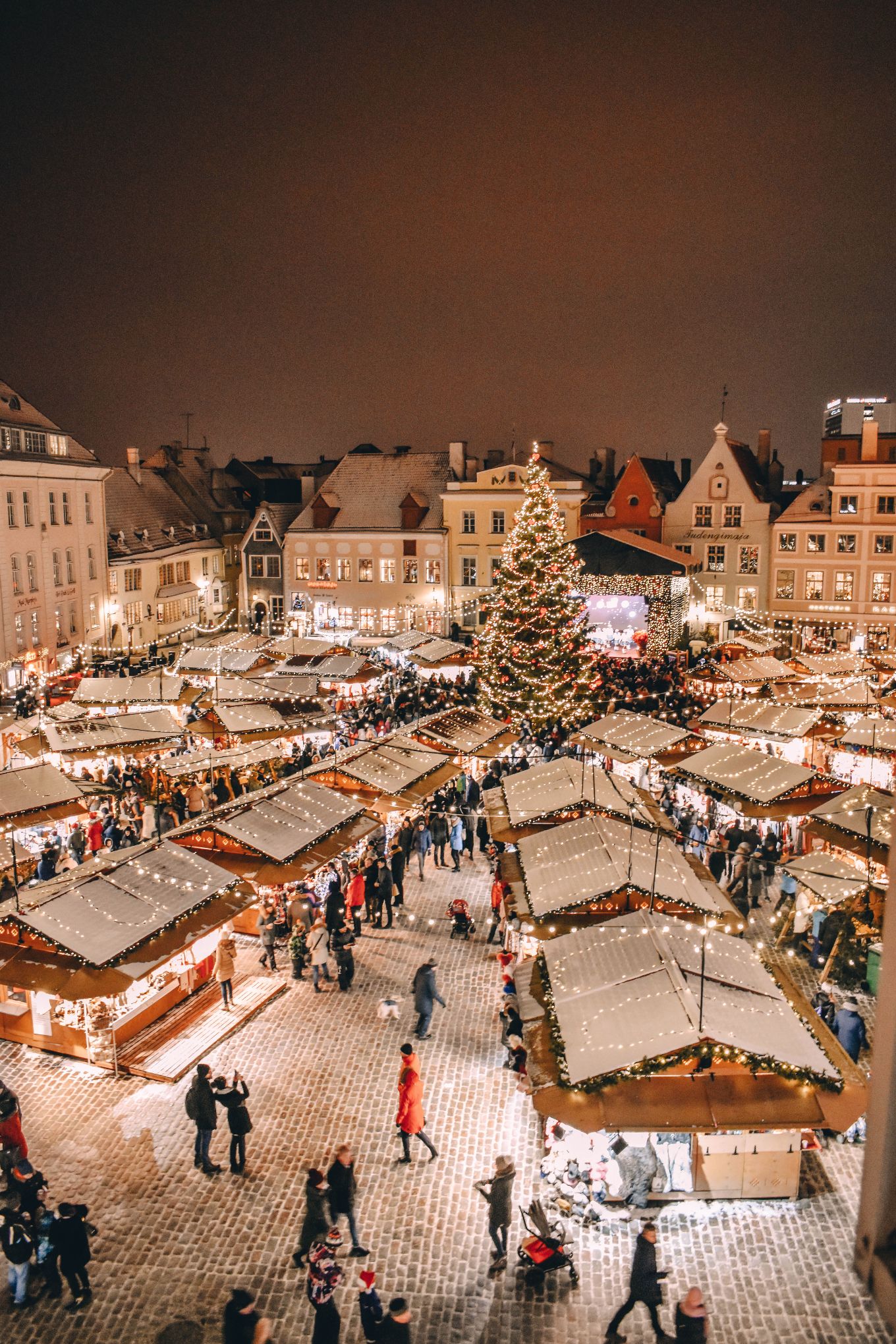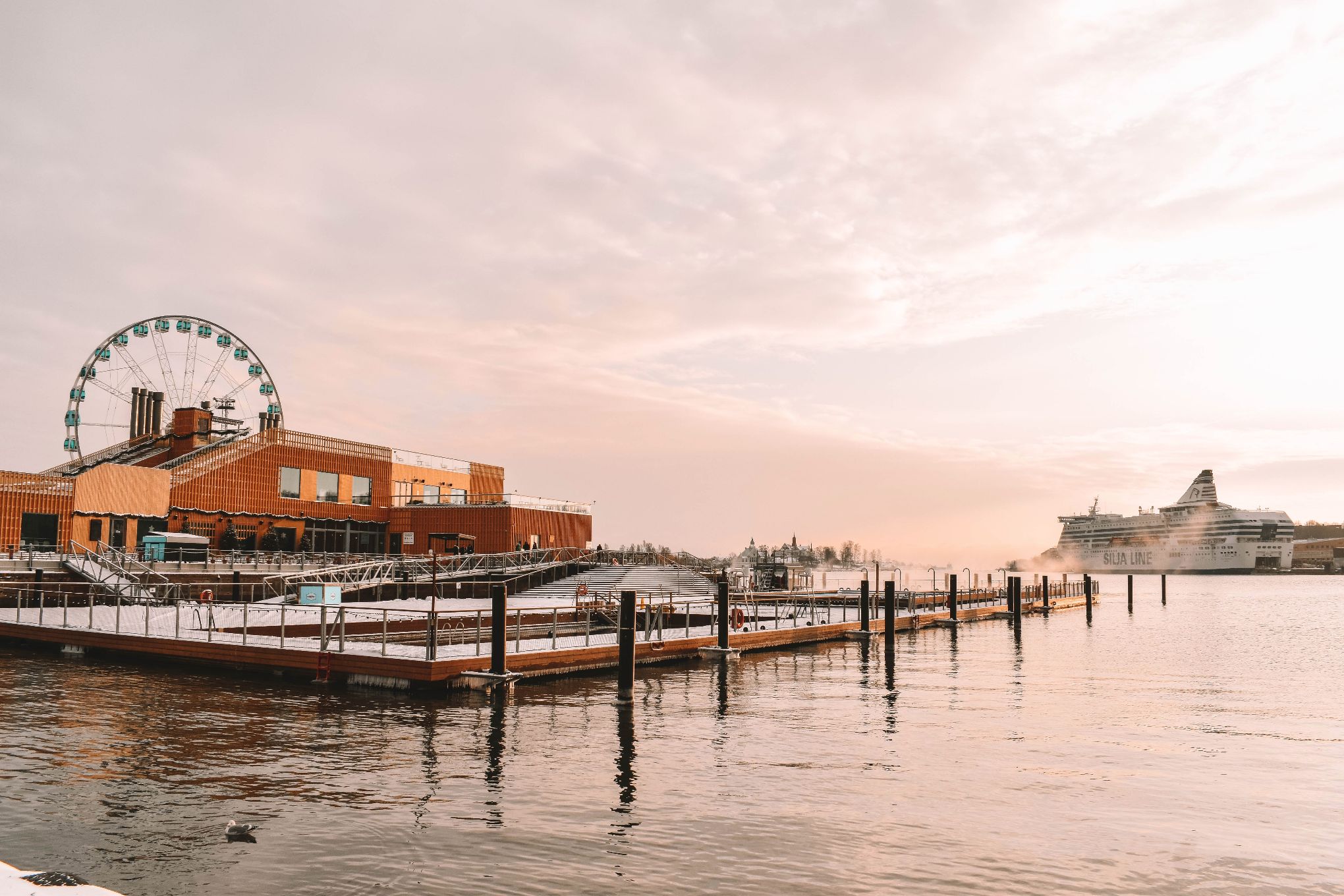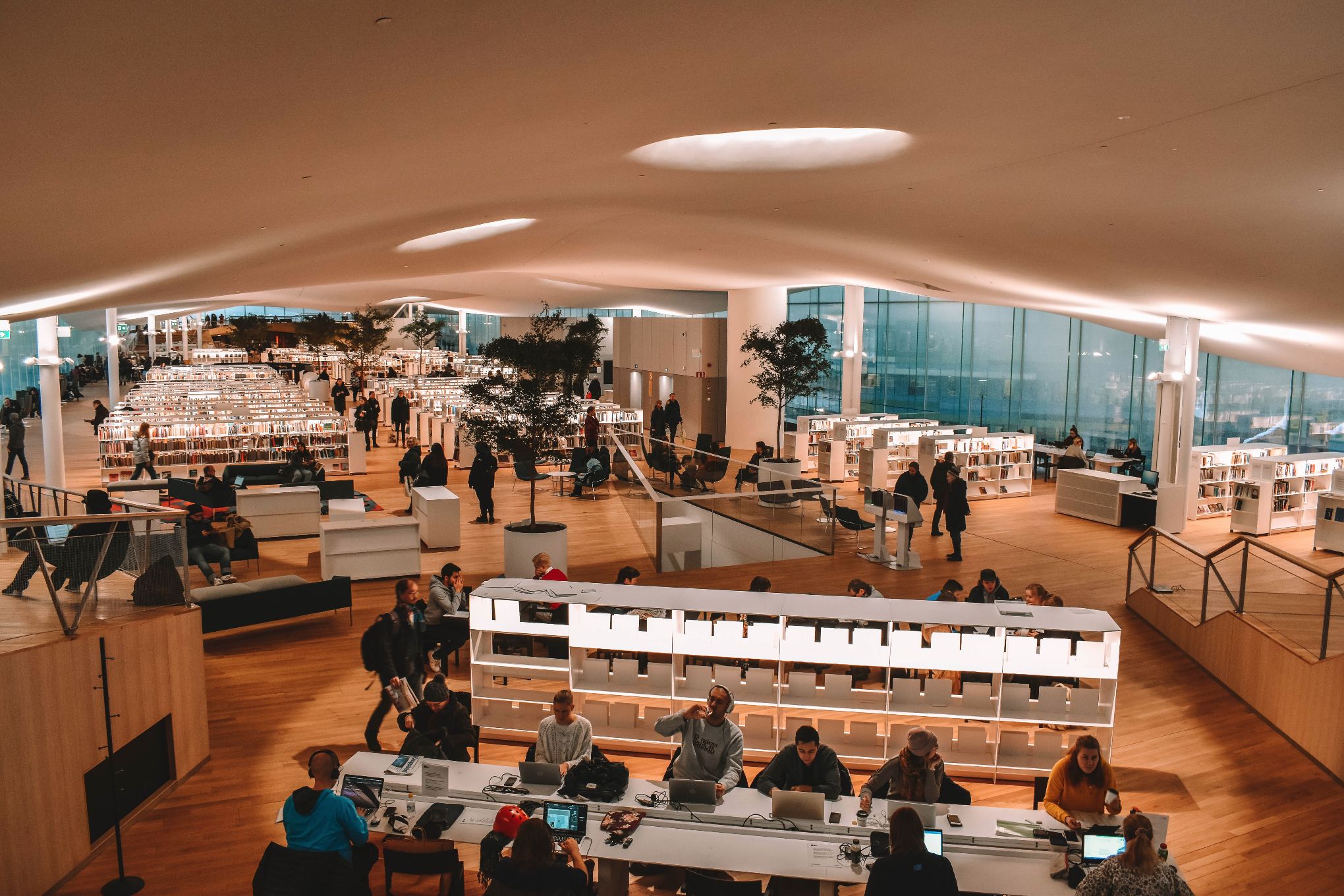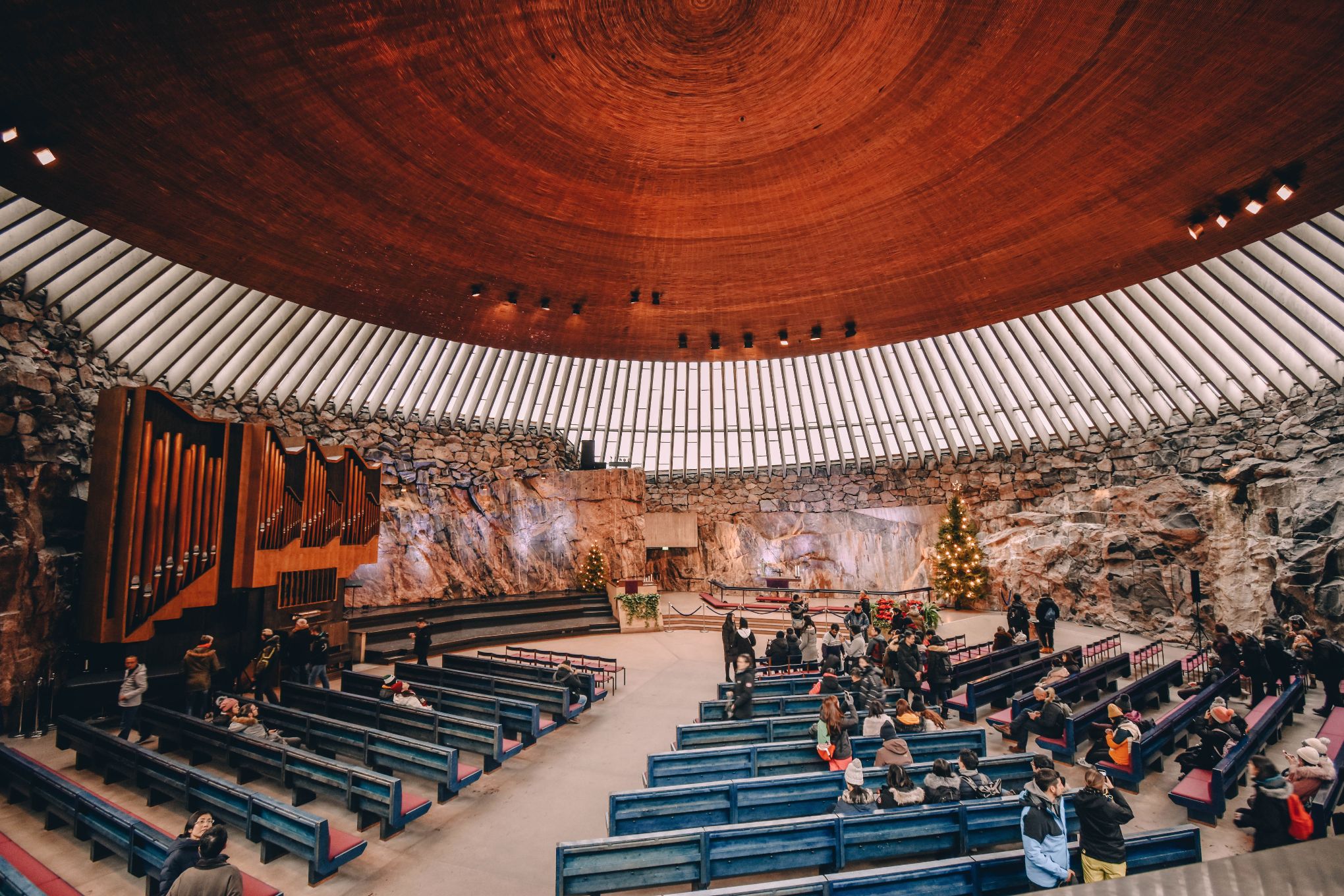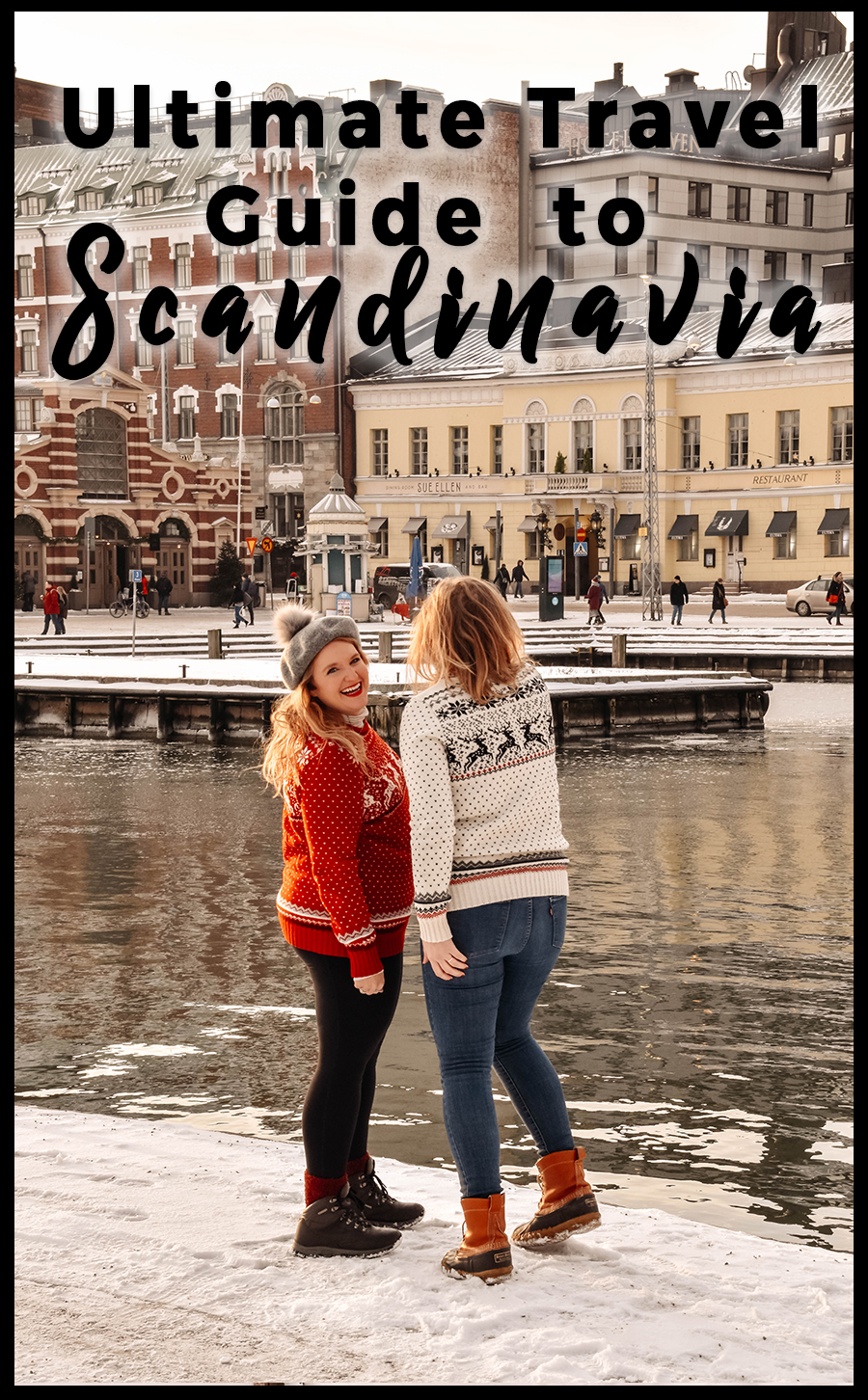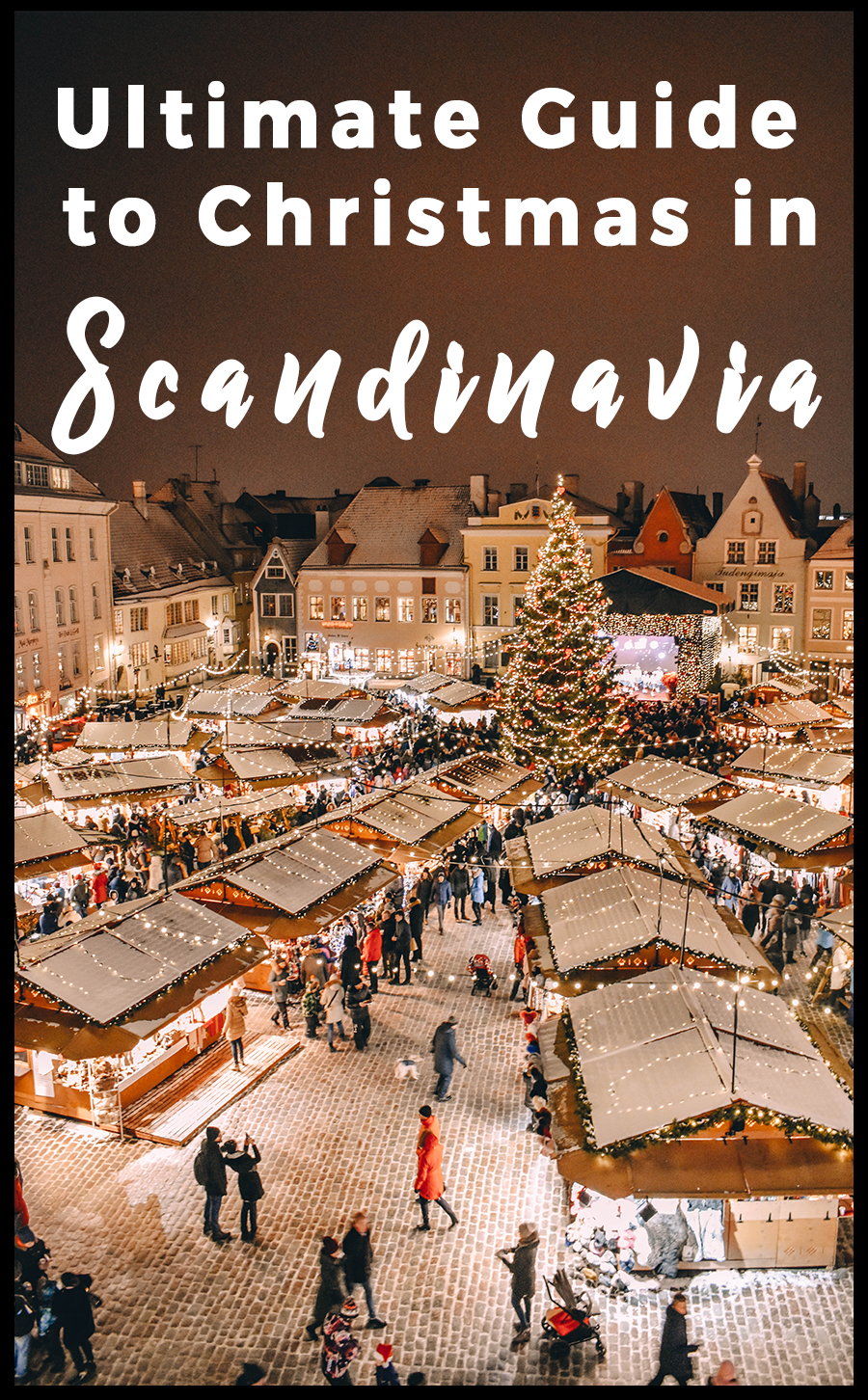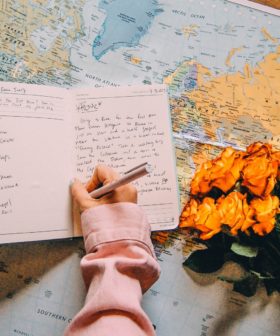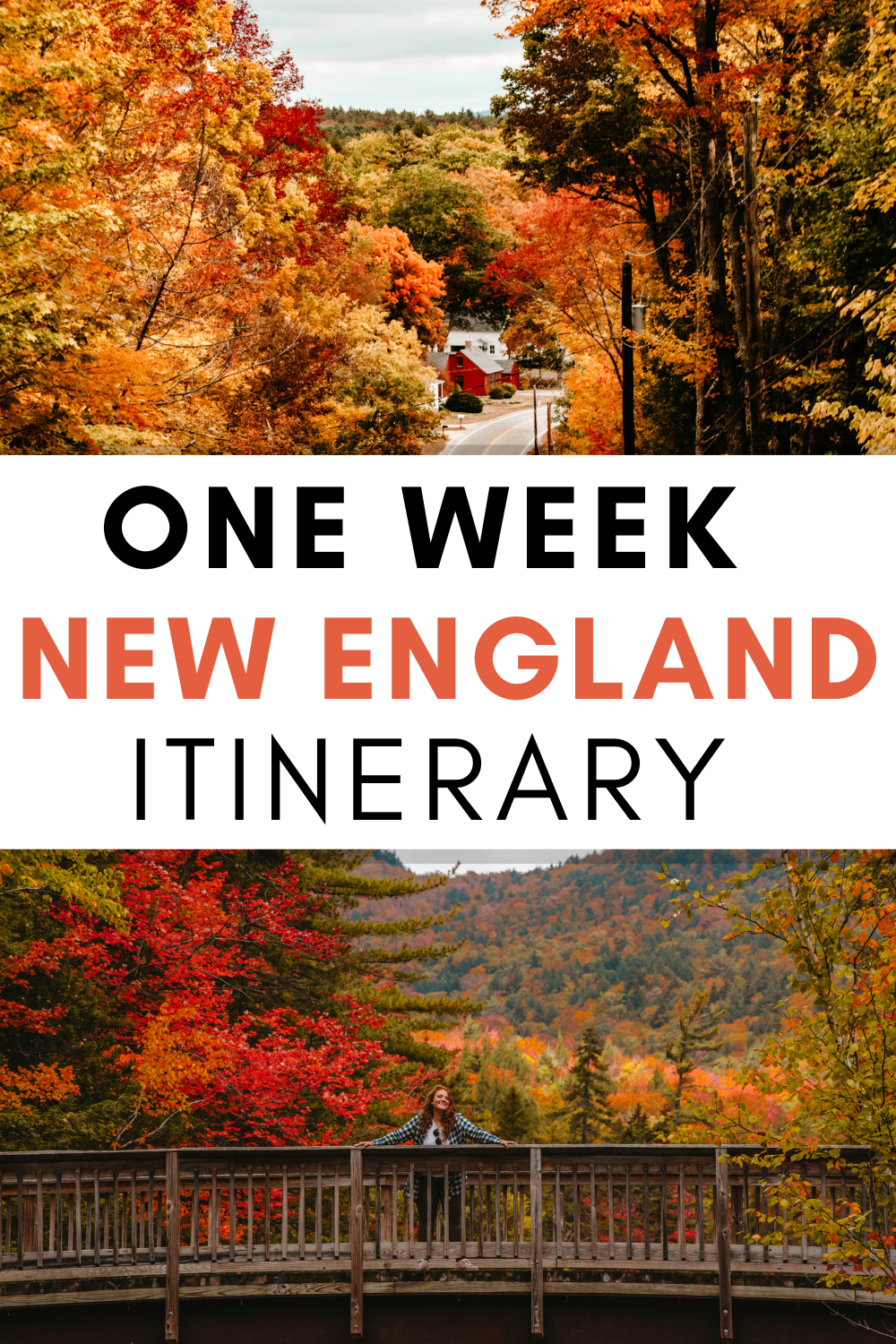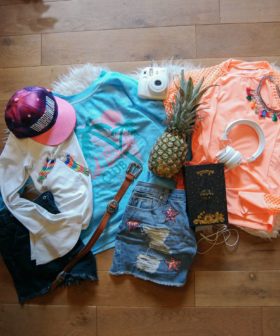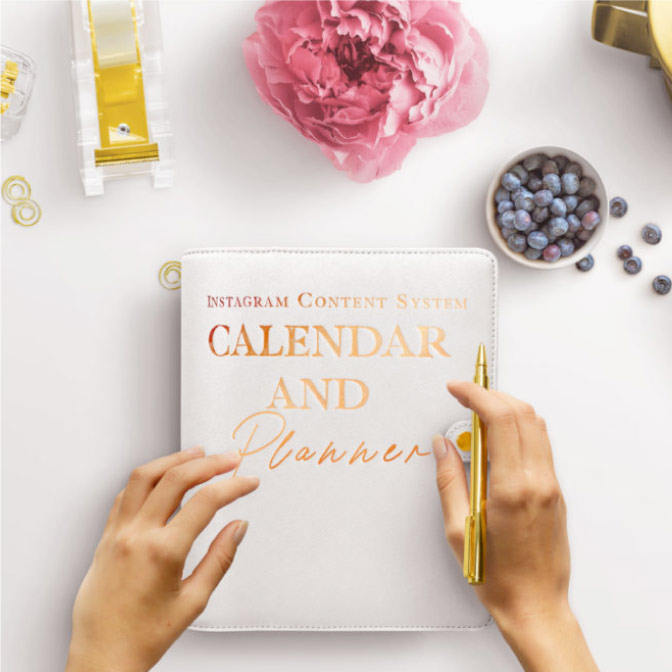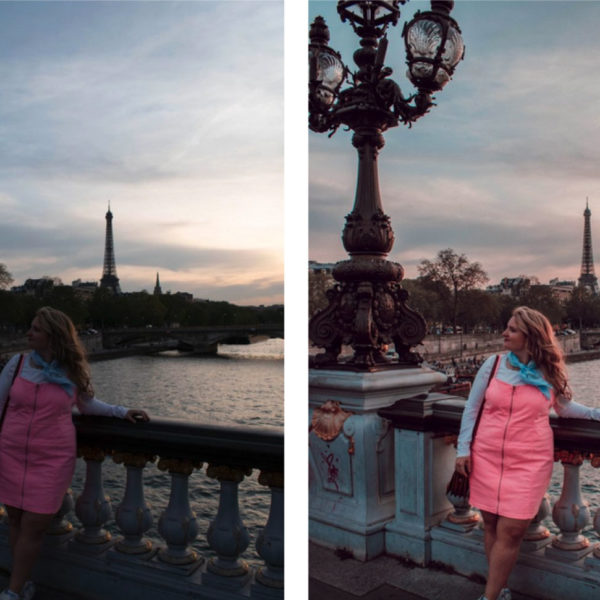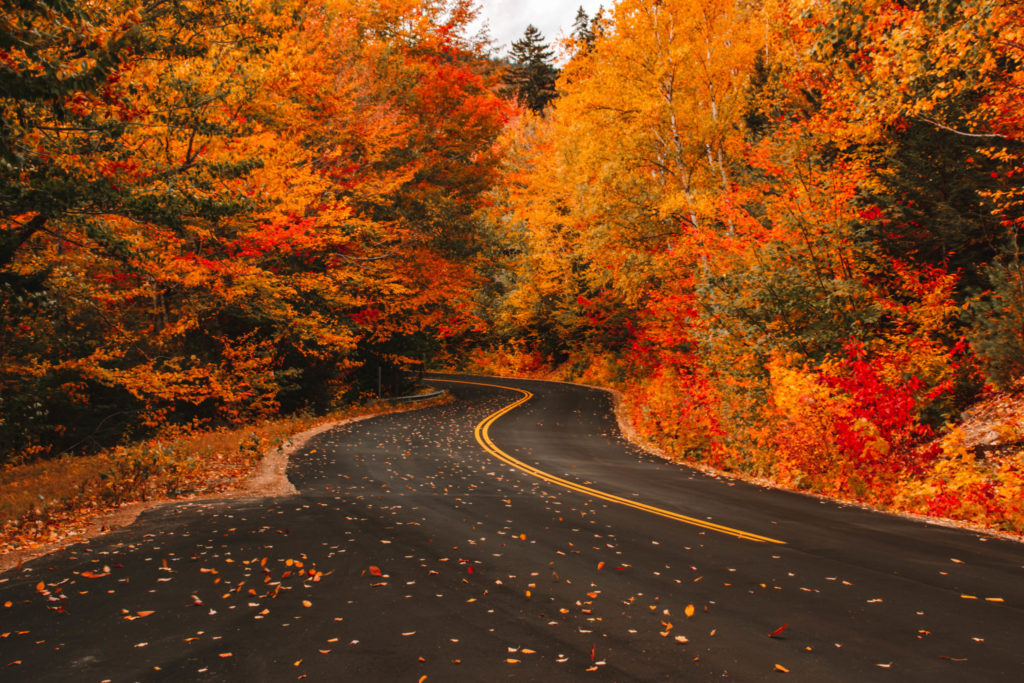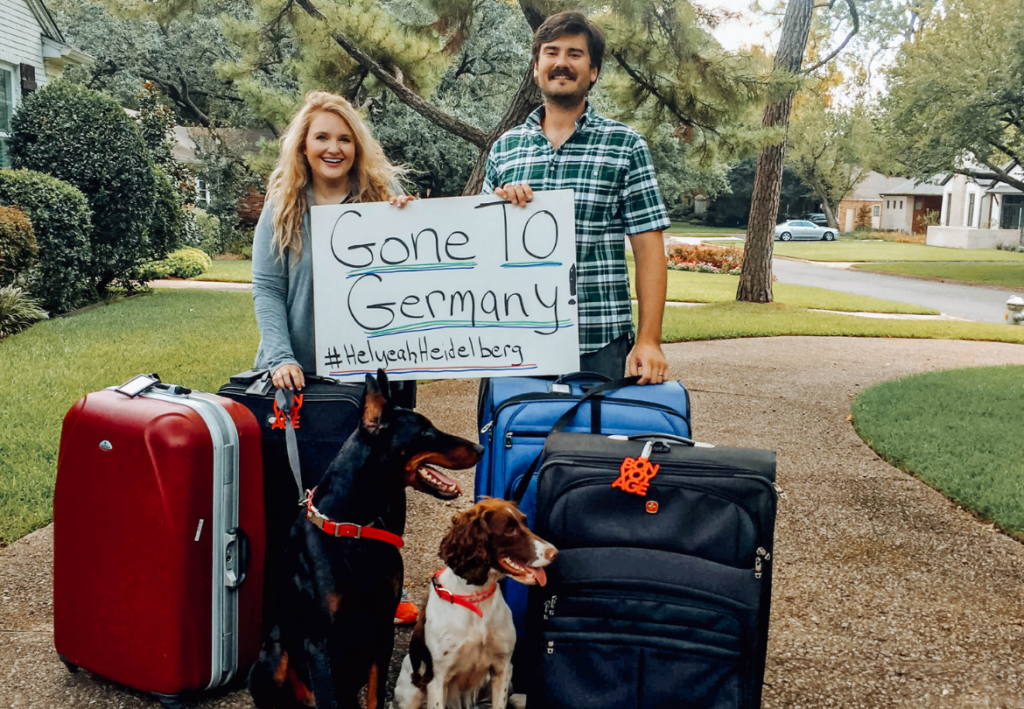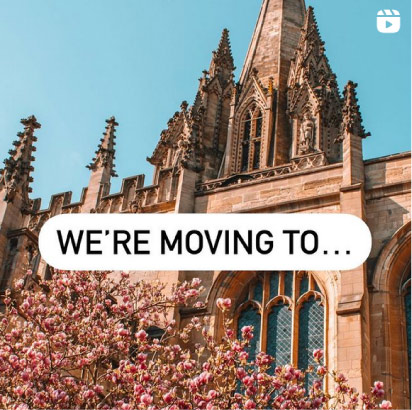The twinkle lights pierced the night sky, and my feet crunched in the snow. I pursed my lips over my paper cup of glogg as I glanced around at the stalls filled with wool sweaters, sizzling donuts, and Christmas knick-knacks. I felt the warm wine euphorically course through my body and warm me up from the inside out.
This ultimate Scandinavia itinerary shares the classic sights and some of the best these destinations have to offer. This guide focuses on the capital cities: Oslo in Norway, Stockholm in Sweden, Helsinki in Finland, and even pond hops to Tallinn in Estonia.
See the beautiful homes from around these countries, get a history of the architecture, keep warm in the sauna, and lastly, find Santa. This 10-day route through Northern Europe is a unique experience in Europe.
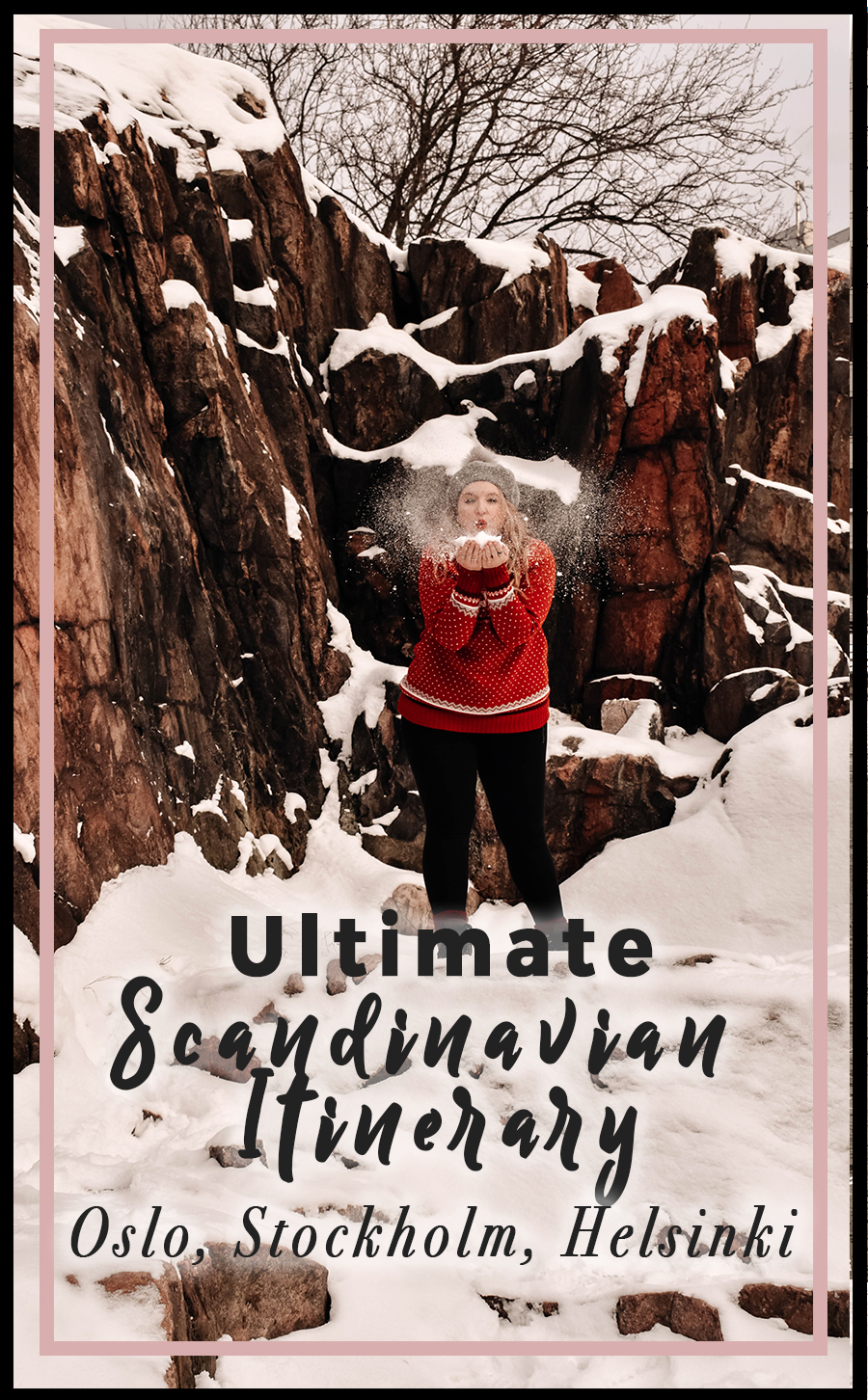
When to travel in Scandinavia
Never in my wildest dreams would I have thought the northern parts of Europe would leave such a profound impression on me. Norway, Sweden, Finland, and Estonia were on my bucket list for a long time, and I finally got to visit them.
I went in December, right before Christmas. Although it was cold, the added snow made it feel a bit more magical. If you'd like to escape the heat, going in the summer is also a wonderful time. You will find ideal climate in the summer months, but a true winter wonderland November through February.
Length of Time to Travel Scandinavia
I went for 10 days and covered Norway, Sweden, Finland, and even popped over to Estonia. If you have extra time I suggest going to Copenhagen, Denmark. If you still have more time you can head farther north to Lapland to experience the true outdoor sights of Scandinavia. For this itinerary, I focused mostly on the more urban parts of the region. I hit up the capitals of each country which were buzzing with things to do, traditional food, and lots of great museums.
How to Travel Through Scandinavia
I flew into Oslo from Frankfurt, Germany. I did have to switch planes in Copenhagen, but I found relatively inexpensive flights. We took a train from Oslo, Norway to Stockholm, Sweden which I highly recommend. It was very scenic and looks like a painted winter landscape out of the comfortable train window.
From Stockholm to Helsinki we took a short plane ride. This was easy, inexpensive, and you can find flights occurring all times of the day. Here's how I find great prices on flights.
Lastly, we took a magnificent boat ride from Helsinki to Tallinn, Estonia. I couldn't recommend this more. The boat ride was inexpensive but absolutely lovely. It's only a few hours to ride the boat, and you'll find restaurants, bars, shopping, and lush lounges throughout the ship.
Oslo, Norway
The first stop of the trip was Oslo. Norway’s capital and cultural hub, founded in 1040, is often regarded as the winter capital of the world. It's had a rough history: suffering 14 fires and ruled for 300 years by Denmark and Sweden. The last fire, in 1624, was the most detrimental and destroyed the entire city. Oslo was rebuilt closer to Akershus Fortress under King Christian IV’s reign and called Christiania in his honor. In 1925, they reverted to the old Norse name, Oslo, meaning “the city by the river”.
Oslo is Norway’s biggest city with a population of 1 million people. Since the city’s Port (Port of Oslo, or Oslo Havn) is the country’s leading cargo and ferry port, 6.5 million people pass through here annually.
Karl Johans Gate, named after King Charles III John, and the most famous street in the center of the city, is comprised of a few older streets. It connects the Oslo Central Station and the Central Palace, and it’s full of shops and tourist attractions, the most notable being the National Theater.
Oslo will simply fascinate you because it is surrounded with lots of city squares filled with greenery, scenic streets, fountains, parks, and lakes. In the middle of one such a large park, there is a chocolate cottage in the likes of the one from Hansel and Gretel.
The city’s architecture balances the old and the new styles of buildings. In the main street, you'll see the National Theater, the National Gallery, Parliament, and the Royal Palace. The center of the city is beautiful and very lively as it's full of bars with musicians and interesting shops.
A short walk through the center to the shore, and you’ll find the Aker Brygge. It's named after the Aker River and is now a modern neighborhood filled with fantastic buildings and installations. On Aker Brygge Street, there is the Nobel Peace Prize Museum. Interestingly enough, the award for the Nobel Peace Prize is the only Nobel Prize not given in Sweden because, at the beginning of the century, it was considered that Sweden was too aggressive and it would be inappropriate to award the Nobel Peace Prize there.
The town center of Oslo is quiet and welcoming. Oslo has numerous tunnels under the city, where the Oslo Metro and many of the motorways pass through.
As you may notice, we aren’t halfway through the article but have already mentioned the names of two kings. They might’ve had power back then, however, royalty are just figureheads nowadays.
The Akershus Fortress, a royal castle that once protected Norwegians from Swedes, has beautiful harbor views. The building is currently a temporary seat of the Prime minister of Norway. Opposite of the fortress is a neighborhood with shops and restaurants, perfect to spend an afternoon there.
Where to Stay in Oslo
In Oslo, we stayed at the lovely Frogner House apartments. We had ease of access to most of Oslo’s famous places, and a fully-equipped kitchen where we cooked meals and lounged in luxury away from the cold. We instantly felt right at home.
The perfectly pink building is within walking distance from public transportation, restaurants, and shops.
Our particular place had two bedrooms, as well as a pull-out couch, and a kitchen. There were also two bathrooms which were especially nice since we were traveling with friends. Everyone had their own space to get ready but a common area to hang out.
There was even a washer and dryer which I'm finding increasingly important since I try to pack as minimally as possible. Frogner House has absolutely everything you need for having the best stay in Oslo.
Day 1 Oslo
On the first day, we visited the Christmas market in Spikersuppa. Going to the Christmas fair in the Norwegian National Museum is a very popular tradition among residents and tourists of the capital alike. The Christmas Fair has more than a hundred tiny wood houses where you buy local handicrafts, Christmas decorations, cakes, and other treats. The cafes in the museum are decorated in a holiday style and serve coffee, gingerbread, and other Norwegian Christmas specialties.
It’s easy to feel the Christmas spirit in the very center of Oslo, where natives and visitors can spend quality time eating Christmas delicacies buying ornaments, artwork, and handicrafts, or ice-skating in the Spikersuppa rink. Spikersuppa is full of stalls and tents, illuminated and decorated for Christmas.
Since I was there during Christmas time, I got to know their customs, such as children dressing up, giving gifts and singing on Santa Lucia Day. Mistletoe can be found everywhere because to Norwegians it is a sacred plant, used to heal and provide good luck.
Sometime in the 1300s, rice was introduced to the country, and they started making rice porridge. December is when they love to eat “risengrynsgrøt,” rice porridge with a hidden almond. The legend says that whoever gets the almond will marry first.
Christmas is a magical time but, luckily, Oslo has a lot more to offer. In its center, there is the National Gallery (temporarily closed until 2020, be sure to check opening hours) which showcases the rest of Norway’s cultural soul. It includes the works of art from the master European painters – Edvard Munch, El Greco, Claude Monet, Paul Cézanne, and Pablo Picasso.
In the Gallery you'll find Munch's most famous painting: The Scream. What I enjoyed so much was how few people crowded around the painting. If you've ever been to the Louvre in Paris, the Mona Lisa is bombarded with tourists. So much so, it's hard to get a good look. This is not the case in Oslo. You can contemplate in your own space and get some great pictures.
If you didn't get enough of Munch, head over to the Munch Museum for even more of his works.
Another architectural sighting is the Oslo Cathedral, a 12-century medieval church. A quaint lane near the church will lead you to the Aker river. The Aker Brygge and Tjuvholmen neighborhoods were once powered by a series of mills from the river.
After all, that walking a great place to grab a bite to eat is Mathallen Food Hall. Showcasing some of the best regional dishes, as well as tastes from beyond, this is a nice place to eat and relax.
Day 2 Oslo
We started the day with a walking tour. The Opera House is built on the once-gritty industrial zone and frequently used for outdoor concerts. It opened in 2008 and won several international architectural awards and tried for Guinness book of world record for the largest choir. The edifice itself looks like an iceberg rising from the sea, and people can interact with the design by walking on the roof.
Oslo’s City Hall is a building made between 1931 and 1950 from red brick and represents the working class. The Hall houses the city council and the city administration. It also hosts The Nobel Peace Prize ceremony every December.
The Parliament building (aka Storting building) is a masterpiece designed by Emil Victor Langlet, a Swedish architect. It was completed in 1866 and today houses the seat of Storting. A pair of lions in front of the building guards the parliament and were made by a prisoner in the Akershus Fortress.
To feel more of the European charm, we visited the Grand Café Oslo on the Karl Johans Gate, an acclaimed restaurant that Henrik Ibsen once frequented. Near the Café, there is The Grand Hotel, where Peace Prize winners and pop stars often stay. The glass on the first floor is bulletproof! It hosts the Nobel Peace Prize banquet annually.
We took a stroll through Frogner park or Vigeland park, also called the Sculpture park, because it is the world’s largest park where you can find the works of art of a single artist. The park is located in the western part of Oslo and features over 200 slightly eccentric but beautiful monumental sculptures of Gustav Vigeland, a Norwegian sculptor who left a lasting mark on Norwegian cultural heritage. The park covers a total of 45 hectares and contains masterpieces showcasing the human body though life stages. In addition to sculptures within the Vigeland Park, there is also the beautiful 18th-century castle, Frogner Castle.
If you want to escape city life and want to spend some time in nature, just take the metro to the last station and find yourself in a beautiful natural environment. Marka, the forest that covers the vast mountainous area in the hinterland of Oslo, hides numerous lakes and streams in dense forests lurking on cycling and hiking trails.
We opted to head to the famous ski jump, Holmenkollbakken. Here you'll also find a fabulous restaurant and a great place to get warmed up and have a drink.
Day 3 Oslo
Situated on a fjord, with idyllic views of the water and islands to the south and the mountains to the north Oslo feels as if you're in the countryside and a big city at the same time. Today we museum hopped: visiting the Norwegian Folk Museum, Viking Ship Museum, the Fram Museum, and the Kon-Tiki Museum.
Make sure to look around near the museums as the surrounding areas are absolutely beautiful.
The Norwegian Folk Museum, or the Museum of Cultural History, shows how Norwegians lived from 1500 to the present day. It is an open-air museum, meaning you walk by the beautiful wooden houses and can peak inside each one to discover how people lived. It was particularly picturesque all covered in snow.
Next, take the boat or tram to the Bygdøy peninsula and discover the museums that tell the maritime history of Norway. You'll find the Viking Ship Museum, Fram, and Kon-Tiki museum.
The Viking Ship Museum showcases the three best-preserved ships in the world dating back to the 800s. Part of the Museum of Cultural History of Oslo, you can find out how and why the Vikings took to the ocean. Viking chieftains were buried on their ships together with their belongings which is why we have well preserved ships to this day.
The Museum reveals the story of the discovery of ships Gokstad, Oseberg and Tune, and small boats, sleds, beautiful wagons, tools, textiles and household utensils used at the time of the Vikings. You'll find the ships in pristine conditions since they were encased in watertight and airtight mud.
The Fram Museum is yet another museum dedicated to the exploration of Norwegians on ships. This one shares the history of the Norwegian polar exploration. Inside, you can enter the boat and get a feel for what life was truly like aboard the ship.
Also in the museum, you'll find the Gjøa ship, which carried Roald Amundsen along the Northwest Passage over three years up to 1906. You'll need some time in this museum since it is quite large.
The Kon-Tiki Museum, on the other hand, tells you the story of the Kon-Tiki expedition and houses maps and vessels from the famous journey. Kon-Tiki was a raft on which the Norwegian scientist and researcher Thor Heyerdahl sailed with five other men in 1947 from Callao, Peru on the west coast of South America to the Raroia reef (islands or the archipelago of Tuamotu in France Polynesia). He aimed to prove that people from South America could have settled Polynesia. So he created a boat using wood and materials from the area and successfully sailed to Polynesia. I found this museum extremely interesting and entertaining.
We packed up our stuff and headed for an early morning train for our next capital: Stockholm.
Stockholm, Sweden
It's not just about ABBA, but it's important you know the songs.
Stockholm is home to 2 million people and embraces modern innovation. The mid-15th-century Stockholm was a small trading place, with between five and six thousand inhabitants. During the 15th century, Sweden was united with Denmark and Norway in the Kalmar Union. The 19th century meant fast industrialization and a huge annual birthrate. Today, Stockholm is one of the fastest growing European cities. It is also the only city that has received the status of the “green capital” from the European Union.
But it's not just about modernization. The old town, Gamla Stan, is one of the best preserved medieval city centers on the continent and the birthplace of Stockholm in 1252.
Here you will see the narrowest street in Sweden or learn something new about the Nobel Prize awarded in the City Hall. It is a birthplace of Alfred Nobel, and a city made up of 14 islands that are connected by bridges.
Another famous personality of Stockholm is Gustavus Adolphus of Sweden, Sweden’s king at the beginning of the 17th century. He is credited to strengthening The Swedish Empire. The Gustav Adolf's Square named in his honor is the public square in the center of Stockholm.
The second legendary place to visit if you’re into shopping is Norrmalm, a business and shopping center located around the Sergels square.
While there are many lovely things to see in Stockholm, don't forget to take some time to play in the snow!
Where to Stay in Stockholm
On my very first trip to Sweden, I headed to Malmo and stayed at one of my all-time favorite hotels in Europe, Story. When I saw there was a Story Hotel in Stockholm I knew I needed to stay here.
I was thrilled to find a cool ambiance with attention to detail. The hotel has a hip restaurant that's often busy with tourists and residents alike. The rooms are cozy, and the location to the city center is ideal.
One of my favorite parts of staying at Story Hotels is the advanced technology. You can easily hook up your phone or laptop to watch a movie, listen to music, or look through the pictures you snapped that day. The hotel also provides complimentary breakfast and drinks in your room.
The simple but stylish rooms in Story Hotel are modern and comfortable. You'll find everything you need including many wall outlets (something I find increasingly important in my hotel stays!), full-size bath products, including conditioner (again, important!), and spacious rooms.
It's really a toss up on what I like best about Story Hotel: the extremely helpful staff or the incredible breakfast buffet. I can't choose.
The staff truly made the stay worthwhile by giving us detailed recommendations on places to eat (my favorite restaurant of the trip was their recommendation) and off-the-beaten-path things to do.
In the morning I got up bright and early for the sumptuous feast of breads, meats, cheeses, teas, coffee, spreads, and cookies (YES!) that were provided every day. The trendy breakfast area is complete with purple velvet couches and chairs. It's so cozy, you might not want to leave.
Of course, Story Hotel is in the city center and located just minutes from the tram. I truly couldn't recommend Story Hotels more.
Day 4 – Stockholm
Start things off right by visiting the Versailles of Sweden, Drottningholm Palace. It’s the private residence of the Swedish royal family, located in Drottningholm on the island of Lovö in the municipality of Ekerö in Stockholm. It was originally built at the end of the 16th century as a residence of the royal court. Today, it is a great tourist attraction, and its broader area with the Chinese pavilion and park is listed on the UNESCO World Heritage List. In addition to the ornate rooms in the palace, there is beautiful clothing from the period.
I preferred the Royal Palace of Stockholm which is the King's official residence and also a place where you can see the crown jewels and ornate rooms.
We had fika (Swedish word for having a coffee with a pastry, most frequently a cinnamon bun while having a friendly chat) and headed to the Christmas market. Located in the old part of town, the Christmas market has been held since 1915. At about forty stalls you can find indigenous Swedish products. In addition to the great selection of high-end handicrafts, you can also find a lot of Swedish delicacies to taste as you walk between stalls. Just be aware they do not serve alcohol here, you have to go indoors for that.
The market is on the Stortorget, the oldest square in Stockholm located on the Gamla Stan. Thousands of tourists frequent the square each year, and it’s famous for the brightly-colored tall medieval buildings and bars.
Stortorget’s history is harrowing since in 1520, 90 people were executed here by Danish forces. This was known as the “Swedish Bloodbath” since blood was running through the streets. Seeing the blood run through the streets was supposed to discourage all others from misbehaving. Creepy.
From here we headed to Stockholm's open-air museum, Skansen. This museum is picturesque and shows the way of life of people throughout Sweden before the industrial era.
Don't forget to check out the animals they have on site here!
If you're hungry, check out the market, Östermalm Food Hall for counters packed with traditional Swedish cuisine.
Day 5 – Stockholm
After the exhausting first day, we knew we needed the energy to explore more of Stockholm. The second day started with a typical Swedish breakfast – smörgås (an open-faced sandwich) with ham, a bowl of Muesli and coffee.
We went to see the Nordic Museum that exhibits the life and the customs of the people in this region. For as little as 140 SEK ($15.50) you’ll see how the Swedes lived in the past. The entrance fee covers the free audio guide. Make sure to check out the Northern Lights exhibit here as well.
You'll also find the culture and history of the Sami people, the indigenous people of Sweden.
Museum of Modern Art is another museum of Stockholm, on the island of Skeppsholmen, in which you can see the art of the most important modern and contemporary artists, such as Matisse, Picasso, Louise Bourgeois etc. The walk to the Museum of Modern Art takes you through a park overlooking the sea with the architecture of Stockholm. For lovers of contemporary art, I recommend visiting Bonniers Konsthall, Galleries Andersson and CFHILL.
We went to the Museum of Photography, aka Fotografiska, where you can see contemporary photography artists’ works. I absolutely loved this museum. As you've probably noticed, we went to a LOT of museums. But this one was a bit different. Each exhibit was different from the next. I was transfixed by the ethereal images on display and the story each one shared.
The Fotografiska is also a great place to have a drink and get a good view of the city.
The Swedes work hard but might play even harder. They nicknamed Wednesday “Little Saturday” because this is when people start drinking after hours. We headed to the hip neighborhood of Vasastan for drinks and a marvel at the unique architecture around this area. We found a great bar with well priced drinks and funky decor at Bara Enkelt.
I loved walking around this city to see the beautiful architecture!
As for dinner, head to Knut for traditional Sami cuisine. The Sami are the indigenous people to Scandinavia and many still herd reindeer, create unique craftwork, and still speak the Sami language. This was my favorite meal of the trip. You'll find typical dishes such as reindeer, char, and even moose sausage. The dishes were inventive and delicious and the atmosphere here was cozy and refined. I highly recommend trying the flatbread pizza!
Day 6 – Stockholm
We started the day with a tour of City Hall. The Hall is similar to the Oslo City Hall by the red bricks used to construct the building. Made up of eight million bricks, it's notable for holding the Nobel Prize Banquet in the Blue Hall each year.
The Hall is located on the Kungsholmen Island and houses the municipal council, as well as the Nobel Prize banquet. It took 12 years (from 1911-1923) to build the Hall, but despite being built in the 1900s, it has an old architectural style and looks like Italian Renaissance because the architects didn’t want to make it stand out.
The tower is 106 meters tall and made to be taller than the tower in Copenhagen, Denmark (with a height of 105 meters). Although the Swedes and the Danes look like good friends to most of us, their rivalry goes back to the times of the Kalmar Union in the 14th century. However, most of the younger folks consider being culturally and historically linked and therefore refer to each other as broderfolk, “brother people”.
The Blue Hall in the City Hall is the largest of the three and 250 other banquets are held here annually. It has a blue marble floor and it can surprisingly fit 1,350 people – I was shocked when I guessed 300. They do this by setting up the room very specifically with a set number of centimeters allotted to each guest.
The staircase in the Hall is specifically designed for people to walk up and down the stairs in heels. The architect’s wife tried out all different designs of steps because she knew people would be walking up and down for the Nobel prize ceremony.
The Golden Hall is the second largest hall and it is decorated with more than 18 million pieces of gold mosaic. Almost every Swedish citizen could have two stones of 24-karat gold each. The image below depicts the Queen of Lake Mälaren as she sits in the center of the world, the East and West to her left and right.
Now that you've learned some historic importance it's time to get our cultural groove on at the one and only ABBA museum. This interactive museum shares the history and sound from arguably the most famous musical group to ever come out of Sweden.
There are a few other notable places to visit in Stockholm. The Royal Armory, where the artifacts of Swedish military and royalty are held. If you’re more of a nature lover, make sure to visit the Sculpture park – Millesgården in Lidingö, only 15 minutes from downtown Stockholm. It was once home to artists Carl and Olga Milles and now a tourist attraction with sculptures, flowerbeds, fountains and a gallery.
Another place for nature lovers is Royal Djurgården, a protected national park on an island of the same name in the central Stockholm. There you can find historical buildings and monuments, as well as museums and galleries. There is the amusement park Gröna Lund, an open-air museum and ZOO Skansen, and a couple of yacht harbors. The island is full of extensive stretches of forest and meadows where you can take a walk and relax from the city noise.
A great place for dinner is Meatballs for the People. Serving traditional Swedish meatballs in a relaxed atmosphere with a good price you can't go wrong. If you're looking for more upscale, try Prinsen for Swedish fine dining.
From nature, through history to fun and life, it's a city I really enjoyed and I can’t wait to go back.
Helsinki, Finland
It's not just about saunas, but it's a huge part of the culture and one thing you must do in Helsinki. Finland has a population of 5 million, yet has over 3 million saunas! Although the inhabitants of the capital city of Finland are freezing in the winter months, Helsinki, or as they call it “the white city of the north”, is by far the most beautiful for a visit during winter. Modern cafes and exquisite saunas are at every turn, so you’ll have no problem getting warm.
Helsinki is home to more than one million people and is located on the banks of the Gulf of Bothnia. Finland's geographical position between Sweden and Russia largely determined the fate of the country. Finns didn't gain independence until 1917, so their freedom is relatively new.
Helsinki distinguishes itself from other European capitals for two reasons: the natural beauties and the extremely clear street network, which was formed by two main urban designers, Johan Albrecht Ehrenström and Carl Ludvig Engel, leading to the functionalist style of construction. Helsinki was founded in the 16th century as a counterbalance to Tallinn, the capital of Estonia. Today, it has grown into a real metropolis.
Just like London, Helsinki has its own Ferris wheel, where you can enjoy the panorama of the whole city. The ride lasts 12 minutes, and costs as much in Euros. Near the wheel, there is the Orthodox Cathedral Uspenski, which was designed by the Russian architect Aleksey Gornostayev, and was decorated in the Byzantine and Slavic style.
Another cathedral worth seeing is certainly the Helsinki Cathedral, which stands proudly in stark white contrast to the somewhat gray day. This is Carl Ludvig Engel's grand neoclassical cathedral, topped with a green dome.
This pocket-sized European city is known for technology and design. So get on some warm clothing to stroll the streets!
Where to Stay in Helsinki
If you want a truly unique and cool experience then stay in the former jail – Hotel Katajanokka. This modern and surprisingly comfortable hotel makes for a perfect hotel stay. Located near the city center, you'll find a tram stop just steps from the hotel. Despite once housing inmates, there are luxury details, an incredible buffet spread, and even a sauna! The rooms are spacious with beautiful velvet curtains that make the perfect blackout shades- excellent for a good night's rest.
The breakfast buffet is delicious and offers some traditional Finnish cuisine. Located downstairs, you'll find exposed bricks and an intimate setting to enjoy your first meal of the day.
Make sure to walk around the hotel and find an old cell along with pictures on the wall of how it used to look. It's pretty shocking how modern and lovely a former county prison can be! Extensive restoration work took place to turn the hotel into a premier place for guests to stay.
Hotel Katajanokka is a comfortable and stylish hotel with a unique flair. I especially loved reading the stories of famous prisoners in jail.
The staff was helpful and explained that we could privately use the sauna whenever we chose. The sauna is open on designated days for free, but we wanted to use it on our own. It was such a treat to feel the heat, then step out in the snowy evening. Hotel Katajanokka is an excellent place to experience Helsinki and escape the ordinary.
Day 7 – Helsinki
Walking through the streets of Helsinki is a distinct and charming atmosphere. The architecture is a mixture of modern and Scandinavian as well as industrial. There's a sense of “cool” when you're seeing the sites of Helsinki. The Presidential Palace looks and feels Russian. It was designed by Pehr Gransted at the beginning of the 19th century. Today the Finns use it for presidential functions and receptions. The palace is in the old part of the town, so you can find Helsinki City Hall and Market Hall in the proximity.
It is worth visiting both the Museum of Design, as well as the Museum of Contemporary Art. Both host a number of valuable exhibits that will not disappoint you.
Since it was Christmas time, we wandered the snow-covered streets and experienced the lovely Christmas market in front of the Helsinki Cathedral. Despite the lack of sun this time of year, the city is bustling with jubilation. Grab a cup of glögi, mulled wine, and look up at the Christmas lights on Aleksanterinkatu Street. Despite the cold people are out and about to make the most of “pikkujoulu“, aka, little Christmas.
You'll find the market in the heart of town with many stalls selling handicrafts and food. But you MUST try the donuts. Sincerely, these hot and tasty treats were the best donuts I've had in my life! You'll also find a traditional sauna right at the market. It was so much fun to see people come out of the steamy sauna and walk, barefoot, for a glass of something strong.
There are many traditions surrounding the Christmas season that you can find out more about here. And of course, be on the look out for Santa!
Day 8 – Tallinn, Estonia
How to get from Helsinki to Tallinn
Tallinn was named the best Christmas market of 2019! Knowing this information and the ease to get from Helsinki to Estonia, we had to make the voyage. We were pleasantly surprised by the beautiful ship that carried us from port to port. Loaded with passengers from Finland looking to score some deals on liquor, beer, wine, and gifts, we joined the Finns on board the boat. It was a surprisingly luxurious boat with shops, restaurants, and lounge areas.
See my full guide to the Tallinn Christmas market here!
What to do in Tallinn
Beautiful and well preserved, Tallinn is the capital of Estonia, a small country located in the north of Europe. It is the farthest country in the Baltic region, so I prefer to put it along with the Scandinavian countries. Here you won’t find dragons, witches, princesses, queens, and similar fairy-tale creatures, but girls and young men dressed in medieval clothes, behaving exceptionally kind and friendly.
With more than 5,000 years of history, Tallinn is one of the oldest cities in Northern Europe. First mentioned in 1219 and a merchant paradise from the 14th to the 16th century, the city is listed on the UNESCO World Heritage list. From the 13th century until the Nazi occupation, the city was known as Reval.
The city is tiny, so most of the major sights can be seen within a day.
The city is famous for the old medieval and Gothic houses, like the Three Sisters and the Three Brothers houses. The houses are rich in decoration and filled with motifs of three-leaf clovers, fake windows (so as not to have to pay steep taxes on windows!), and sloping roofs.
Since it was a day trip, we visited the Christmas market then took a fun walking tour. This was a bit different than a traditional walking tour in that they dressed up in costume and pretended they were from back in the day during the merchant times. They not only showed us the top sights but told us a rich and colorful history in stories.
The main entrance of the town is through the city gates, Viru, with the two towers that remain of the old medieval fortification. We walked to the Hellemann tower, a 14th-century tower that today hosts exhibitions. We went up the Town Wall Walkway to see the beautiful view overlooking the city.
At the end of the Viru street, there is Olde Hansa, a medieval-style restaurant. There you can try medieval local specialties, such as wild boar sausage. Near the restaurant and next to the Town Hall Square is the Town Hall, the oldest city hall in all of the Scandinavia and Baltics, completed in 1404. This is now the site of the famous Christmas market.
In the downtown of Tallinn is St. Olaf's Church – for a brief time this was the tallest building in Europe. It is dedicated to King Olaf II of Norway and built somewhere around the 12th century. The height of the tower was 115-125 meters but it got hit by lightning about 10 times. Because of this, the whole church burned down three times in the past. After the rebuilding, the tower now measures 123.8 meters. People used to climb up to this tower and walk back and forth on a tight rope!
Behind the corner of the city square, you will see the medieval Lutheran church of the Holy Spirit, with an engraved clock from the 17th century. A walk through the narrow stone streets of the old town and you can visit the three main churches: St. Mary’s Cathedral, Alexander Nevsky Orthodox Cathedral, and St. Nicholas’ church.
We enjoyed the picturesque street of Lühike jalg, but stopped briefly at the very beginning of the street and entered the Danish King’s Garden, a little courtyard surrounded by medieval city walls and statues of the three monks.
Another famous place we visited was the Great Guild Hall, built in 1550 for merchants in the historical Town Center. This Gothic building now houses the Estonian History Museum.
After the tour we ventured over to Vabamu – The Museum of Occupations and Freedom, which is dedicated to the Soviet Union period in Estonia’s history. While this is an important historic time, the museum itself was not well laid out and a bit hard to follow.
For dinner, we went to Väike Restaurant and tried some of the extraordinary Estonian delicacies. This is one of the top-rated restaurants in Estonia but the prices are very reasonable. Food was hearty and delicious.
We ended the day by experiencing the magic at the lovely Christmas market, taking place right in front of Town Hall. I recommend going here to buy a traditional wool sweater, like I did, and listen to the music and performers on stage.
See the Tallinn Christmas market guide here.
Day 9 – Helsinki
Back in Helsinki, it was time to see what else we could discover. The old town is known for its beautiful Art Nouveau architecture. Although modernized by functionalism, Helsinki retained some of its glorious works of art, such as the Central Railway Station, the University of Helsinki building, and Kallio church, a Lutheran church that serves both as a church and a concert venue.
We headed to the Market Square (Kauppatori) which stands right next to the Baltic Sea. Here you can find traditional Finnish food and souvenirs. We ate indoors at the Old Market Hall which has been serving visitors since 1889.
Next, it was time to warm up in the sauna right next to the Baltic Sea! The Allas Sea Pool is a marine spa in the heart of the city. Experience the true Finnish culture by jumping into the freezing water and warming up in the sauna.
If you have time, be sure to go to the island under the protection of UNESCO, Suomenlinna, which has played an important role in observing enemy ships in history. You can see the 18th-century sea fortress as well as the lovely nature. The Swedes began building the fortress to defend against the Russians and today it is a famous tourist spot. The tour costs 10 euros.
It is worth visiting both the Museum of Design, as well as the Museum of Contemporary Art. Both host a number of valuable exhibits that will not disappoint.
However, the best place to see Finnish design is at the Helsinki Central Library, also called Oodi. It is an energy-efficient work of art with glass, steel and wooden structures in the northern part of the city. It's a marvelous work of art with striking glass windows, a wooden facade, and comfortable chairs. Of course, you can read a book, but you can also host an event, and even use the 3D printer!
Day 10 – Helsinki and Fly Home
Ending the trip at one of the coolest spots in Helsinki, the Temppeliaukio Church, aka Church of the Rock. Build by Timo and Tumo Suomalainen in the 1960s, the church was carved out and built directly into the ancient rock. Inside you’ll find a stunning interior with a shallow circular dome made of copper and beautiful, natural granite walls.
If you have extra time, stroll over to Esplanadi park, known as Espa. The popular urban park was designed by Carl Ludwig Engel, who also made the Engles Theater (the first theater in the city) in the park itself.
More time? Add Copenhagen
If you have a few extra days and you'd like to experience more of Scandinavia I recommend going to Denmark's capital, Copenhagen. This vibrant city is full of life and there's plenty to do!
No matter where you go in Scandinavia there is an abundance of things to see, do, and experience. It's easy to travel from place to place, take day trips, or just relax like a traditional Scandinavian.

